DONNERSTAG ABEND – JEUDI SOIR – THURSDAY EVENING
Mischa Dickerhof
Buch mit 131 Photos von Mischa Dickerhof und mit Texten von Sabine Haupt und Gonzo (Alain Meyer), deutsch-französisch-englisch; übersetzt haben Yves Raeber, Yla M. von Dach und Alta L. Price.
Ce que nous apprend le contact physique avec la scène du Commerce relève de l’apprentissage de la promiscuité. L’exercice vaut pour tout le monde. Pour les petits comme pour les gros. Sur un espace aussi limité, il faut savoir composer non seulement avec son physique mais – et sans s’énerver – aussi avec la morphologie des autres. Il faut aimer l’autre, ce qui est parfois beaucoup demander. Mais pensez-vous que les Beatles et les Stones n’ont pas débuté leurs carrières de la même façon, finissant par se postillonner dessus dans des caves insalubres ? Ainsi est né le rock et ainsi mourra-t-il. Dont acte. Chaque jeudi soir, nous assistons à un assemblage corporel chaque fois différent, chaque fois plus ou moins hétéroclite, sur une surface restreinte où un Rubik’s Cube humain s’incruste dans l’art déco maison. Et lorsqu’un artiste se présente en solo, il paraît tout petit, petit, petit. (Gonzo | Alain Meyer)
Was uns der Kontakt mit der Szene des Commerce lehrt, hat mit dem Erlernen der Tuchfühlung zu tun. Die Übung gilt für alle. Für die Kleinen wie für die Dicken. Auf so begrenztem Raum gilt es nicht nur mit seinem Körper, sondern – ohne sich zu nerven – auch mit der Morphologie der anderen gütlich zurechtzukommen. Man muss den Anderen mögen, und das ist manchmal viel verlangt. Doch glauben Sie, dass die Beatles und die Stones nicht genauso angefangen haben? Indem sie sich in heruntergekommenen Kellern schließlich mit Speicheltröpfchen besprühten? So wurde der Rock geboren, und so wird er sterben. Das sei ein für allemal gesagt. Jeden Donnerstagabend nehmen wir auf einer begrenzten Fläche, auf der ein menschlicher Rubik’s Cube sich in den hauseigenen Art déco einnistet, an einer jedes Mal verschiedenen, jedes Mal mehr oder weniger bunt zusammengewürfelten Körper-Assemblage teil. Und wenn ein Künstler sich solo präsentiert, dann erscheint er ganz klein, so klein, winzig klein. (Gonzo | Alain Meyer)
What those of us who came into contact with this scene learned from it has everything to do with knowing how to act in close contact. It’s something everyone, young and old alike, should practice. In such confined space you learn to cope not only with your own body, but with others’ bodies, too — without getting on your own or anyone else’s nerves. You have to like and even love others, and sometimes that’s a tall order indeed. But don’t you think the Beatles and the Stones got their start the same way? By showering one another in droplets of spit spewed out in rundown basements? That’s how rock was born, and that’s how it’ll die. Duly noted. Every Thursday evening, in this confined space, we take part in a variable corporeal composition —each time the bodies are different, each time they’re more or less colorful — wherein a human Rubik’s cube is nestled into an art déco building. And if an artist takes the stage solo, they seem small, oh so small, teeny-tiny. (Gonzo | Alain Meyer)
Die Konzertphotos von Mischa Dickerhof aber sind brandaktuell, entstanden in den Jahren 2015 bis 2018. Die Aura der Vergangenheit ist hier nur fingiert, die Melancholie ein Ergebnis künstlerisch-ästhetischer Verfahren. Walter Benjamin hat das rätselhafte, eigentlich unerklärliche Bildphänomen der »Aura« als »einmalige Erscheinung einer Ferne, so nah sie sein mag« definiert. Dabei ging es ihm nicht nur um räumliche Ferne. Denn hier im Café du Commerce steht und sitzt ja alles eng und hautnah beieinander; man sieht den Atem und den Schweiß der MusikerInnen, blickt quasi ins offene Maul der Musik, wenn der Sänger fast das Mikro verschluckt oder den Mund aufreißt, als wolle er Edvard Munchs berühmte Lithografie »Der Schrei« nachstellen. Nein, an Nähe fehlt es nicht: Saxophon und Klarinette glänzen porentief, während das Schlagzeug im Lichtkegel zu brennen beginnt. Dann wieder verdeckt der Schatten einer Basstrommel oder eines Beckens die halbe Bühne. Großaufnahmen, Zooms auf einzelne Notenblätter, auf Ohrringe, Biergläser und Tattoos vermitteln den Eindruck von Intimität. Und doch erscheint alles wie entrückt. Man möchte nach dem glänzenden Metall und seinen Schatten, nach Lichtern und Gesichtern greifen, die schönen oder skurrilen Gestalten berühren, die stumme Musik lautstellen, ins Bild hineinsteigen, dabei sein. (Sabine Haupt)
Par contre, les photos de Mischa Dickerhof prises entre 2015 et 2018 paraissent flambant neuves. L’aura du passé est seulement fictive, et la mélancolie devient le résultat d’un procédé esthétique et artistique. Walter Benjamin a défini »l’Aura«, ce mystérieux et inexplicable phénomène visuel, comme » l’unique apparition d’un lointain, si proche soit-il «. Il ne s’agissait pour lui pas uniquement d’une distance spatiale. Car au Café du Commerce, on est tous assis les uns sur les autres ; respiration et sueur des musicien(ne)s se voient et se sentent, et quand le chanteur avale presque son micro ou ouvre sa bouche comme s’il voulait nous rappeler »Le Cri« de la célèbre lithographie d’Edvard Munch, on est, quasiment, devant le trou béant de la musique. Non, la proximité est de mise : le saxophone et la clarinette brillent de tout leur éclat, alors que la batterie s’enflamme sous les projecteurs. La moitié de la scène est soudainement plongée dans l’ombre de la grosse caisse ou des cymbales. Plans serrés et zooms sur partitions, boucles d’oreilles, chopes de bières et tatouages créent de l’intimité. Et pourtant, tout paraît enchanté. On aimerait prendre le cuivre et ses ombres, les lumières et les visages dans ses mains, toucher les créatures bizarres, mettre du son sur l’image, entrer dans le tableau. Y être, quoi ! (Sabine Haupt)
But Mischa Dickerhof’s concert photos are completely current, shot between 2015 and 2018. In this case, their historic aura is made up, the melancholy result of artistic and aesthetic processes. Walter Benjamin described the enigmatic, inexplicable pictorial phenomenon of the aura as »the unique phenomenon of a distance, however close it may be.« But he wasn’t just talking about physical distance, because in these images from the Café du Commerce everything is close together: you can see the musicians’ breath and sweat; it’s almost like you’re gazing into the gaping mouth of music itself; the singers nearly swallow the microphone, they open their mouths as if they’re the subject in Edvard Munch’s famous lithograph »The Scream«. No, there’s no lack of physical closeness here: the saxophone and clarinet shine deep into their players’ pores as the drums catch fire in the spotlight. Then again, the shadow of a bass drum or a cymbal covers half the stage. Close-ups, zooms focusing on individual notes on a sheet of music, on earrings, beer glasses, and tattoos give the impression of intimacy. Everyone looks rapt, and yet everything also seems detached somehow. We want to reach out and grab the shiny metal and its shadow, the lights and faces, the beautiful and bizarre figures — we want to turn up the volume on this silent music, to step into the picture, to be there. (Sabine Haupt)
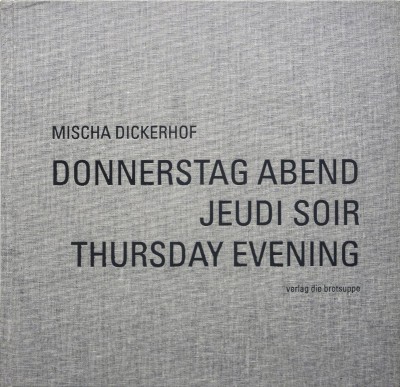
- Albert Thebell, Physiker und Fälscher
- ALITHEA
- Allegra
- Amori. Die Inseln
- Amt für Lichtbildprojektion
- ANCHISES IN ALASKA
Ein Vaterbuch in Versen - Aschtronaut unger em Miuchglasdach |
Astronaut unter dem Milchglasdach - Asseblick
- Auf dem Laufband
- BIEL ÖNDER KONSTRÖKSCHN
- bieler altstadt portrait de la vieille ville de bienne
- Bienenkönigin. Blaue Kreise
- Bis es passt
Zehn Erzählungen - Bözinger Geschichte
- Brennende Flügel und lächerliche Vampire
- Brief an meinen Diktator
- Bruchpiloten
- China am Klavier
- Das denkelnde Schilfrohr. Ausgewählte Chroniken
- Das Handbuch Phosphor und Streichhölzer
- Das Konterfei
- Das Losungswort
- Das Mumienkind
- Das Urbeil
Gedichte Bilder Rezepte - DAZWISCHENTÖNE
- Der Agent der kleinen Dinge erwacht am Bach
- Der Auftrag
- Der Kälberich
- Der Sog
oder Wäschst du unsere Stinkefinger mit deinen Tränen? - Der Sohn danach
- Die Erde und ihr Trabant
- Die Erfindung meines Vaters
- Die Farben der Schwalbe
- Die fröhliche Moritat von der Bleibe
- Die Hexe von Dentervals
- Die Panzerung
- Die Pürin
- Die Schule fängt wieder an
- Die Störung
- Die Zukunft der Toten
- Doktor Hirschfelds Patient
- DONNERSTAG ABEND – JEUDI SOIR – THURSDAY EVENING
- Durch das Westland
- Eigentümer des Lapsus
- Ein glückliches Exil
- Ein Kirschbaum im Treppenhaus
- Ein langer blauer Montag
- Ein lauwarmer Planet mit Läusen
- Ein Tag in Fukushima – Eine Woche in Japan
- einfach schön und gut
Leben an den Rändern der Konsumgesellschaft - Es war doch nur Sex
- Fast nichts all inclusive
- FEST
- Festival Del Rio
- FORTSCHREIBEN – ECRIRE ENCORE
- Fremd und vertraut
- Gegen Gewicht
- Georg und Thea oder Das Buch
- Geschichte einer Erhebung
- Geschichten im Vorübergehen
- Geschlecht und Nation
- Gezeitenreibung
- Giftig unterwegs
- Grande-Fin
- Grit
- GROSSWERDEN UND EINKNICKEN
- HEILIGENSCHEINBLASS
- Hinter dem Gwätt
- Hirn-Gespinste
- Hoch oben im Tal der Wölfe
- Höhenangst
- Hoffnung und Fest
- HOTEL GALAXY
- I will be different every time
- Iljas Kern –
Eine Erinnerung - Infloreszenz
- Inventar der Orte
- Jeden Tag eine Geschichte |
Chaque jour une histoire - Kaktus.
Eine Wildwestgeschichte - Keine Sorge alles gut
- Kindergedichte
- Kleine blaue Nacht
- Konrad, Felix und ich
- La Catherine
- La Matta
- leg di aschtändig a
- Lichtschaden. Zement
- Louis Capet, Fortsetzung und Schluss
- Louis Chevrolet
- Louis Soutter, sehr wahrscheinlich
- Luc und das Glück
- Maila, Pia und die Schokoladenzwillinge
– Eine Geschichte zum Vorlesen und Nachkochen - Mario Bettoli erzählt
- Maud und Aud
- Mein Selbstmord
- Mein Vater geht jeden Tag vier Mal die Treppe hinauf und hinunter
- Melken mit Stil
- metamorphose
- Mit dem Auge schreiben
- Mösli
- Musik, ein Leben lang
- Nach unserer Welt
- NEBELSTREIF
- Neon Pink & Blue
- Neue Wohnform für Mutige
- Nicht einmal einen Hund besass er
- Nonnas Geburtstag
- November
- OHNE KOMMA
- 36 Orte in Biel und Umgebung
- 28 Orte und ein Weg – 28 lieux – 28 luoghi
- PhiloZoo
- PLUS 1,5 GRAD CELSIUS
- Prekäre Komplizenschaft
Die Wörter, das Sprechen, die Stadt - Ruhe sanft
- Schieflage
- sChly Mandli
- Schriften I bis V – Texte für als mit zur Musik
- Schumacher
- 13 Schundromane
- SCHWARZES
- Sexualität
- SIEBEN JAHRE MIT DEM JAPANER
- SO EINE IST SIE
- SO IST ES EBEN
- Sommernächte
- Sophie Lapierre
- Stadt auf Zeit
- still, still, still
- suisseminiature
- Teneber Vid
- TIMBUKTU
- Traubenmord
- Tunnelblick
- Über Menschliches
- Verpasst Deutschland den Anschluss?
- versickerungen
gedichte, geschichten, bilder und szenen - Verwandte Bande
- Vielfrass
- Von oben herab
- Wege durch finstere Zeiten. Afghanische und Schweizer Texte über Flucht und Asyl
- Weihnachtslieder – für Klavier
- WEISST DU, WELCHES TIER?
- Wie die Milch aus dem Schaf kommt
- Wiedersehen in Tanger
- Wildes Licht
- Willkommen im Tal der Tränen
- wo auch immer wir sind
- Wo der August ein Herbstmonat ist
- Zdevan Qumr – Stefan Kummer
- Zedern. Und Meer
- Zingara Triste
- 1969 Zwei Freunde – ein Sommer
- Zwölf Runden
- Das Umbiel
- Gott im Gletscherspalt
- Bretter bohren
- Das geteilte Elektron
- Farantheiner
- Der blaue Faden. Pariser Dunkelziffern
D'Anna Gianfranco
Burke Fork
Rahmy Philippe
Lier Johanna
Terzaghi Matteo
Bissig Florian
Steffen Sebastian
Könneker Marie-Luise
Layaz Michel
Muhlert Sonja
Verein | Association »Altstadtportrait«
Haupt Sabine
Theobaldy Jürgen
Kaestli Tobias
Wyrsch Beat
Eugène
Walder Claudia
Barilier Etienne
Roorda Henri
Terzaghi Matteo
von Dach Yla M.
Benoziglio Jean-Luc
Pelli Grandini Giuliana
Schneider Urs Peter
Ammann Hans J.
Micieli Francesco
Micieli Francesco
Høghaug Leif
Hede Ida Marie
Vuillème Jean-Bernard
Terzaghi Matteo
Amsél
Popescu Marius Daniel
Layaz Michel
Giger Hubert
Rahmy Philippe
Lerch Noëmi
Boissier Laurence
Moßmann Walter
Haupt Sabine
Verdan Nicolas
Dickerhof Mischa
Nødtvedt Erlend O.
Feninsky Basia
Bosc David
Luterbacher Thierry
von Büren Erhard
Roorda Henri
Harms Rebecca
Könneker Marie-Luise
Ziegler Roswitha
Čomafai Sagal Maj
Frey Anna
Schäfli Roland
Schweizerisches Literaturinstitut |
Institut littéraire suisse
Löpfe Franziska
Bänziger Andri
Imer André
Boissier Laurence
Theobaldy Jürgen
Yuval-Davis Nira
Schwyn Ruedy
Abate Francesco
Buffat Romain
Lerch Noëmi
von Wyl Benjamin
Morgenthaler Johannes
Lergier-Caviezel Leontina
Christen Markus
Meizoz Jérôme
Winkelmann Saskia
Rorgemoen Kjersti
Keller Christoph
Schutzbach Franziska
Bänziger Andri
Antonescu Raluca
Boissier Laurence
Rochat Jean-Pierre
Fehr Daniel
Ledniowska Malwina
Micieli Francesco
Dickerhof Urs
Ryf Isabelle
Löpfe Franziska
Pasquali Adrien
Steffen Sebastian
Haupt Sabine
Benoziglio Jean-Luc
Layaz Michel
Layaz Michel
Sandoz Thomas
Frank René
Wyss Heinz
Bakke Gunstein
Roorda Henri
Micieli Francesco
Rochat Jean-Pierre
Maier Luise
Dickerhof Urs
Andres Daniel
Andres Daniel
Rychner Antoinette
Rochat Jean-Pierre
Schneeberger X
Zohren Barbara
Parterre Achim
Loosli Ruth
Prod'hom Jean
Wahli Myriam
Peyer Veronica
Rohner Kurt
von Dach Yla M.
Micieli Francesco
Blum Elisabeth
Sandoz Thomas
Raboud Thierry
Schaad Hans P.
Schneider Urs Peter
Buffat Romain
13 Autorinnen und Autoren
Rinderknecht Christine
Lepori Lou
Rinderknecht Christine
Frey Anna
Gogniat Noëlle
Flahaut Thomas
Moßmann Walter
Pellegrino Bruno
Jenni Tobias
Schneeberger X
Gisin Sabine
Gloor Lukas
Fahrländer Fritz-Marc
Theobaldy Noa
Christen Markus
Trampert Rainer
Seck Eva
Mathis Verena
Fjeldbraaten Ida
Hadorn Werner
Haupt Sabine
Jenni Tobias
Dürig Regina
Lier Johanna
Amsél
Andrea Manuel
Lerch Noëmi
Rychner Antoinette
Pellegrino Bruno
Qumr Zdevan
Lier Johanna
Waldvogel Markus
Frigg Marco
Düblin Michael
Schneider Urs Peter
Aeschbacher Ursi Anna
Ammann Hans J.
D'Anna Gianfranco
Savolainen Patrick
Haupt Sabine
-

Albert Thebell, Physiker und Fälscher
Politik, Hochfinanz, Kultur: Es gibt sie überall, die tragische Figur des bewunderten und beneideten Hochstaplers. Er allein weiss, dass sein Ruhm auf Lug und Trug aufbaut. Und doch kann er, selbst wenn er es vielleicht möchte, seine Schuld nicht eingestehen, weil seine Umgebung sich in seinen Erfolgen sonnt und ihn damit zu immer weiteren Betrügereien anspornt. So ergeht es in diesem Roman, der sich an einem tatsächlich vorgefallenen Forschungsskandal inspiriert, auch dem Physiker und Fälscher Albert Thebell.
-

ALITHEA
-
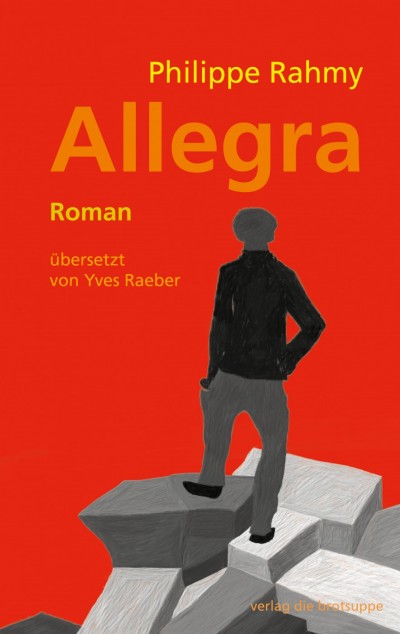
Allegra
»Wer neben einem Zoo wohnt, ändert seine Sehweise. Weil er die wilden Tiere hört, wird er weniger zivilisiert. Aufrichtiger.«
-

Amori. Die Inseln
»Bekomme ich in Europa keine Aufenthaltsbewilligung, gibt es kein einziges Land, das mich aufnimmt. Das ist verrückt. Und in Kabul töten sie mich. Trotzdem drohen sie mir mit Deportation. Ich verstehe das nicht«, sagt Abtun S., 21 Jahre, im Registrierungs- und Aufnahmezentrum Moria auf der griechischen Insel Lesbos.
-

Amt für Lichtbildprojektion
Die Beziehung zwischen Sehen und Vorstellung: Um dieses Thema kreisen die drei Dutzend Prosastücke, die meist die Geschichte einer verirrten Fotografie oder Figur erzählen.
-

ANCHISES IN ALASKA
Ein Vaterbuch in VersenWas, wenn der Tod des Anderen die Möglichkeit des Nachfragens ausgelöscht hat? Das lyrische Ich, das in diesem Buch die ganze Redezeit beansprucht, will sich nicht mit einem Monolog zufriedengeben.
-
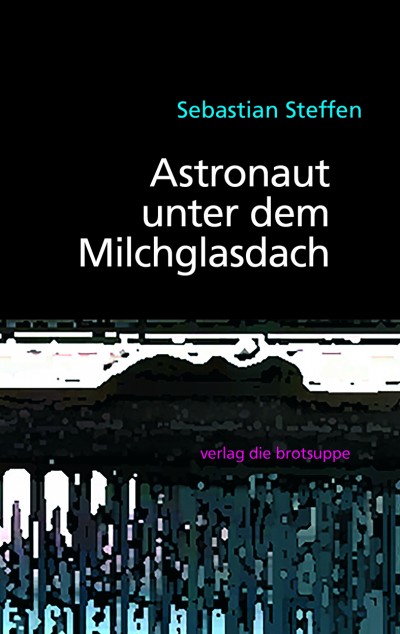
Aschtronaut unger em Miuchglasdach |
Astronaut unter dem Milchglasdach»Sebastian Steffen hat aus dem Seeländer Dialekt eine literarische Sprache gemacht, die einen ganz eigenen Sog erzeugt, sie hat einen Ton, von dem man sich gerne verführen lässt, und sie transportiert die Erlebnisse der Kleinstadtastronauten direkt unter unsere Hirnkappe. Ein urbaner Roman mit einer eben so urbanen Sprache.« (Francesco Micieli)
-
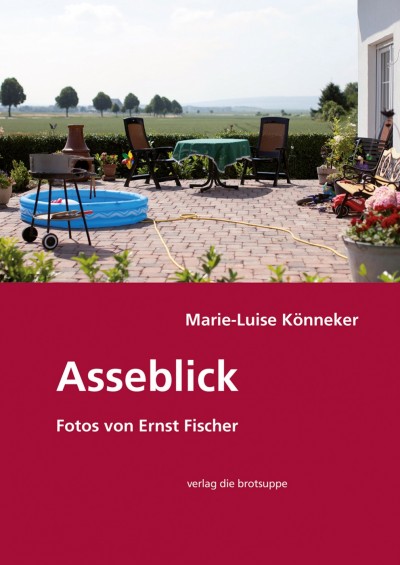
Asseblick
»Seit mein Geburtsort Remlingen zum Zentrum eines weltweit wahrgenommenen Atommülldesasters wurde, kehrt die verdrängte Heimat durch alle Medien zu mir zurück. Wenn ich, um Erinnerung oft vergeblich bemüht, mich frage, was die Spitzenunterhosen meiner Grossmutter mit dem kontaminierten Asse-Schacht zu tun haben, so scheint es leicht – vielleicht allzu leicht – zu antworten: nichts.«
-

Auf dem Laufband
Er möchte perfekt sein. Mehr als perfekt. Um sich das zu beweisen, spricht er auf der Heimfahrt von der Arbeit während Monaten in sein Diktaphon, erklärt sich seinen Alltag, sich selbst.
-
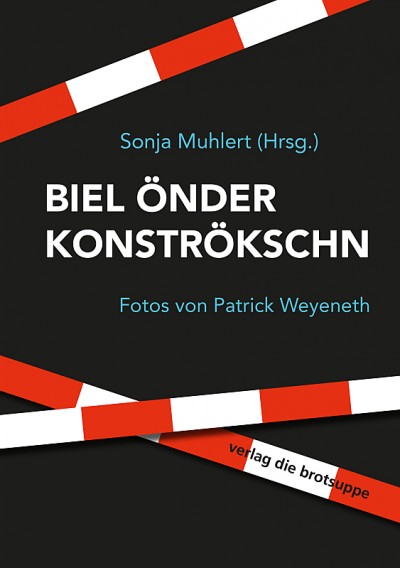
BIEL ÖNDER KONSTRÖKSCHN
In 36 Texten setzen sich Schülerinnen und Schüler aus zwei Klassen des Gymnasiums Biel-Seeland mit Veränderungen in ihrer Stadt auseinander. Entstanden sind Geschichten, Gedichte, Krimis, Science Fictions, Reportagen, Interviews und ein Essay.
Der Titel ist dabei Programm: ÖNDER KONSTRÖKSCHN verweist auf Biels Grossbaustelle Schüssinsel und die damit stattfindenden Veränderungen im Stadtleben, meint aber auch ein junges Lebensgefühl: die Welt im steten Wandel.
-
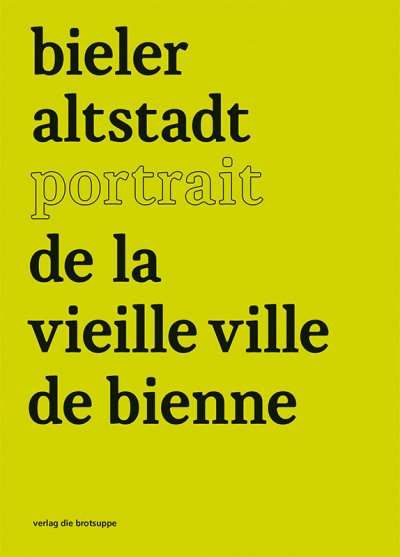
bieler altstadt portrait de la vieille ville de bienne
Das Altstadtportrait ist ein kurzweiliger, facettenreicher Guide für Bielerinnen und Biel-Besucher. | Ce portrait de la Vieille Ville est un guide qui se veut divertissant, aux multiples facettes, à l’attention des Biennois(es) et des personnes de passage
-
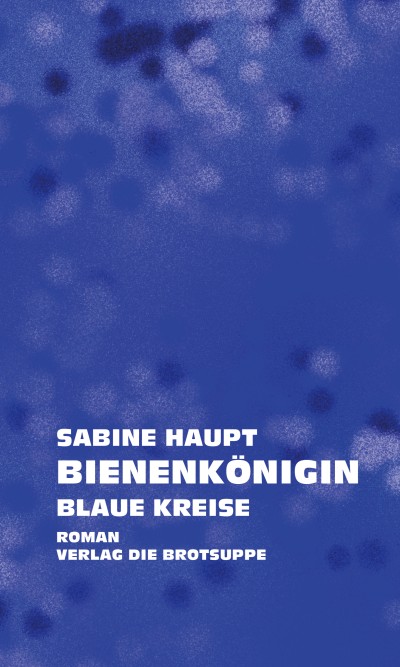
Bienenkönigin. Blaue Kreise
-

Bis es passt
Zehn ErzählungenVon der schlichten Beschreibung eines Nachmittags mit Kind auf dem Land und anderen Stimmungsbildern bis zu beiläufigen Erinnerungen an den Krieg: Diese Erzählungen sind von einer überraschenden Vielfalt, ihre Sprache wandelt sich mit den halbwahren Begebenheiten und wenig wahrscheinlichen Absurditäten, die sie schildert.
-

Bözinger Geschichte
»Bözingen wird meistens als Bieler ›Aussenquartier‹ wahrgenommen, so, als ob es sich um ein blosses Wohn- und Industriequartier handelte, das der Stadt Biel angefügt worden wäre. In Wirklichkeit ist Bözingen im Kern ein altes Dorf mit einer reichen Geschichte, das erst vor hundert Jahren mit der Stadt fusioniert hat.« (Rudolf Vogt, Burgerpräsident)
-
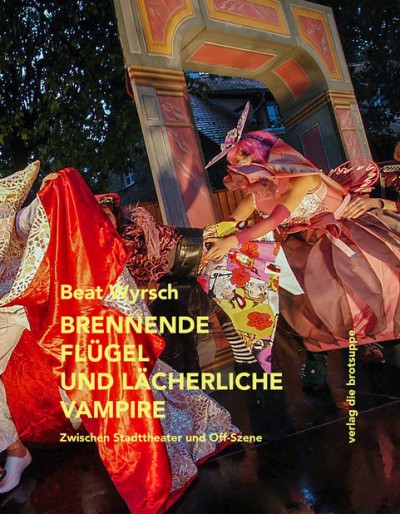
Brennende Flügel und lächerliche Vampire
-
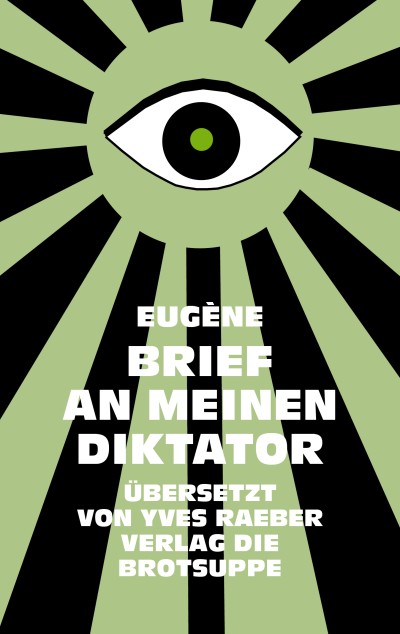
Brief an meinen Diktator
»Brief an meinen Diktator« ist eine von Humor, Wut und Menschlichkeit geprägte Auseinandersetzung mit den Vernarbungen einer Diktatur.
-

Bruchpiloten
Die Mutter hat ein Leben im Dorf, am Berg, auf dem Hof. Sie hat eine Familie, hat den Vater, ihren Garten, ihre Hühner. Doch ihre Träume lassen sich nicht so leicht aussperren, sie schleichen sich ins Herz wie der Fuchs in den Hühnerstall.
-
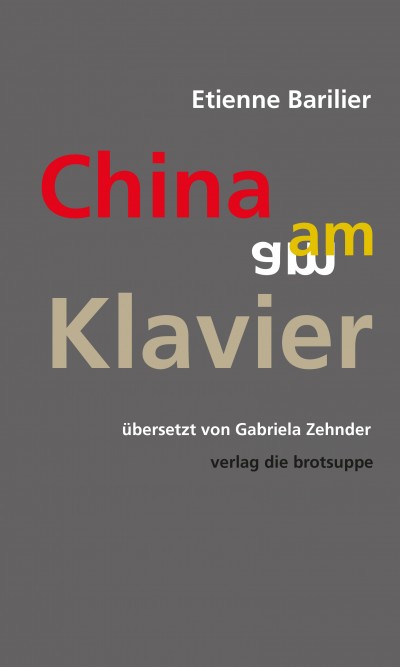
China am Klavier
Bei einem Sommerfestival in Südfrankreich spielt eine junge chinesische Pianistin (inspiriert von Yuja Wang) Scarlatti, Brahms und Chopin. Überwältigt von ihrer Kunst, ehrt ein Musikkritiker sie als die grösste Pianistin der Gegenwart. Ein anderer Kritiker, ironisch und distanziert, bemängelt bei der gleichen Interpretin ein Spiel ohne Seele, das lediglich aus Kunstgriffen und Imitation bestehe.
-

Das denkelnde Schilfrohr. Ausgewählte Chroniken
»Bevor ich meinem Verleger die Texte übergab, die in diesem Band versammelt sind, legte ich Wert darauf, sie nochmals durchzulesen, denn ich hatte Bedenken. Wie zu erwarten war, habe ich darin viele Ideen gefunden, die seit langem, ach! völlig ausgeblichen sind. Doch da und dort habe ich mit freudiger Erregung den Puls des Denkelns wahrgenommen. Es ist nicht zu leugnen: Ich bin ein denkelndes Schilfrohr.«
-

Das Handbuch Phosphor und Streichhölzer
-

Das Konterfei
»Das Konterfei besitzt ein Wirklichkeitssieb, das ganze Fragmente von Lebensgeschichten, die anderen vielleicht bedeutsam erscheinen, einfach durchrutschen lässt! Kaum erlebt, scheinen diese Fragmente zu den Sedimenten aller anderen geschriebenen und ungeschriebenen Geschichten zu fallen, in Staub, Sand und Dreck!«
-

Das Losungswort
»Halb Franzose, zum Teil Jude, halb Schweizer, nicht sehr katholisch, hat der Autor diese vier Elemente in den Computer eingegeben (den er nicht besitzt) und seine eigene Erinnerung angeklickt, oder was davon übrig bleibt. So erfährt man also, weshalb ein griesgrämiger Helvetier, Gelegenheitsflötist, sich gegen Mitte dieses Jahrhunderts auf einer kleinen Insel zwischen der Garonne und der Dordogne niederliess ...«
-

Das Mumienkind
In ihrem Buch Das Mumienkind stellt Giuliana Pelli Grandini die Schlüsselmomente von zehn therapeutischen Geschichten vor. Doch diese zehn als Einakter konzipierten Geschichten sind weit mehr als klinische Fälle: es sind poetische Märchen, Tagebuchseiten und Theaterszenen in einem.
-

Das Urbeil
Gedichte Bilder RezepteGedichte, Bilder, Rezepte: eine Versammlung unbeantwortbarer, kunstferner Produkte, wie sie zu Covidzeiten auch der schönen Stadt Biel zu denken geben.
-

DAZWISCHENTÖNE
Das Buch versammelt alle Kolumnen aus den Jahren 2007 bis 2013, die Hans J. Ammann für das Bieler Tagblatt geschrieben hat. Sie beschäftigen sich mit nicht viel weniger als der »ganzen« Welt und erhellen auf überraschende Weise sogar, was einem vorher schon klar und durchsichtig erschienen ist.
-

Der Agent der kleinen Dinge erwacht am Bach
»Der Agent der kleinen Dinge erwacht am Bach« ist das zweite Buch, das Francesco Micieli über den selbst ernannten Privatdetektiv geschrieben hat. Der erste Band erschien 2014 im Zytglogge Verlag.
-

Der Auftrag
Ein neuer Gedichtband von Francesco Micieli, mit lyrischem und scharfem Blick in die Innen- und Umwelt.
-
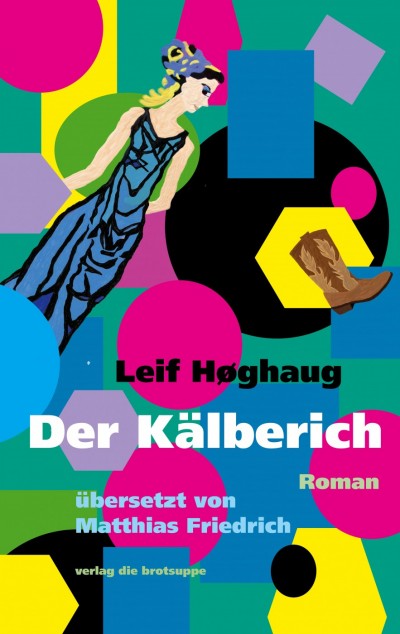
Der Kälberich
Zwischen Gegenwart und Vergangenheit, Western, Sci-Fi und Mystery hin und her springend, erzählt Leif Høghaug eine rabenschwarze Komödie über Verbrechen und Strafe.
-

Der Sog
oder Wäschst du unsere Stinkefinger mit deinen Tränen?Der Sog ist ein Geheimbrief aus dem Mittelschichtsschlaraffenland einer nicht allzu fernen Zukunft. In rasenden Monologen und pointierten Beobachtungen erzählt Ida Marie Hede von einem Panoptikum, dem kein Bereich des Lebens entgeht.
-
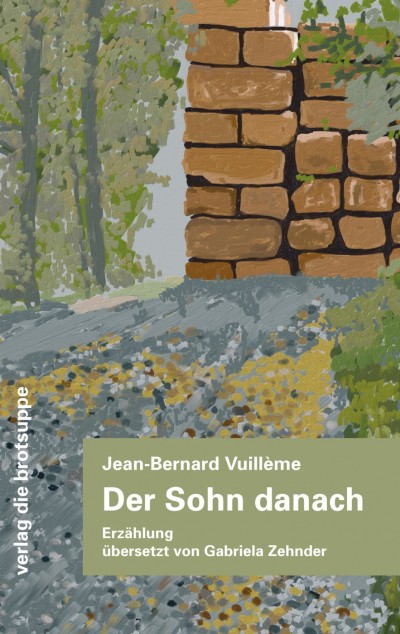
Der Sohn danach
»Er ist unter falschen Vorzeichen geboren, er fühlt sich wie ein Affe, ein Affensohn und hält sich bisweilen mitten in einem Satz zurück, um keine Affenschreie auszustossen. Er findet seine Wurzeln in den Grimassen und Possen seiner entfernten Vorfahren und streicht gerne um ihre Käfige herum.«
-

Die Erde und ihr Trabant
»Ein sehr persönlicher Nicht-Bestseller auf meiner sehr persönlichen Bestenliste ist Matteo Terzaghis Sammlung von Kürzesterzählungen Die Erde und ihr Trabant. Vergnügliche, abschweifende, lunare, ironische Texte auf den Spuren des grossen Schweizer Schriftstellers Robert Walser.« (Paolo Di Stefano, Corriere della Sera, Mailand)
-
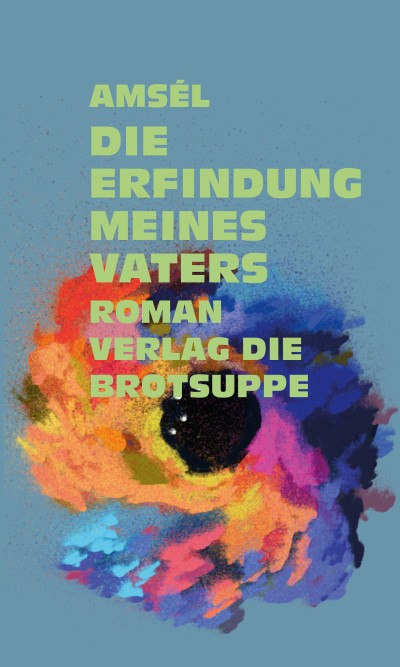
Die Erfindung meines Vaters
Wie kommt einer dazu, sein ganzes Leben der wissenschaftlichen Suche nach Gott zu widmen? Was trieb ihn an, warum gab er trotz vieler Widerstände nicht auf? Drei Jahrzehnte nach seinem Tod erforscht eine Tochter Leben und Werk ihres Vaters im Staatsarchiv Uri.
-

Die Farben der Schwalbe
Der Tod der Mutter löst reihenhaft Erinnerungen aus; es kreuzen sich die Vergangenheit im »Land der Einheitspartei« und die Gegenwart des Schriftstellertums und des Familienlebens in einem Gastland, wo »du Plakatkleber bist«.
-

Die fröhliche Moritat von der Bleibe
»Normalerweise« möchte man die Pensionäre in Madame Viviannes merkwürdigem Institut namens »Die Bleibe« als unangepasst, verhaltensauffällig, trottelig, wenn nicht gar als geistig behindert oder geisteskrank bezeichnen, und das gilt auch für das hier tätige Personal, von Professor Karl, dem Hauptlehrer, über den für Lebenserfahrung zuständigen Zweitlehrer Monsieur Guillaume, den General-Aufseher Monsieur Bertrand, den Arzt Doktor Felix, den Gärtner-Hauswart Monsieur Hadrien und die Empfangsdame Mademoiselle Josette bis zum Putzmann Mon-sieur Alberto und den beiden Köchinnen Blanche und Marguerite.
-
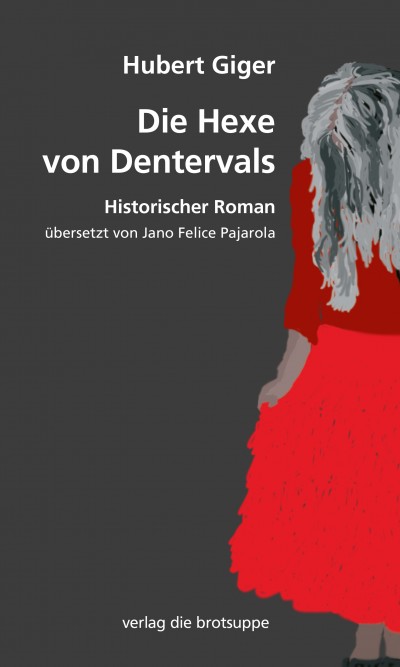
Die Hexe von Dentervals
Die bündnerische Surselva im Jahr 1674: Not und Angst herrschen im Tal. Die Menschen fürchten sich vor Teufelswerk und Hexerei. Auf dem Friedhof des Klosterdorfs Disentis wird ein Kindergrab geschändet, das Kriminalgericht sucht nach dem Täter. Behauptungen, Gerüchte und Verdächtigungen machen die Runde. Eine alte Frau gerät ins Visier der Justiz. Es kommt zum Hexenprozess. Der Scharfrichter wird gerufen …
-
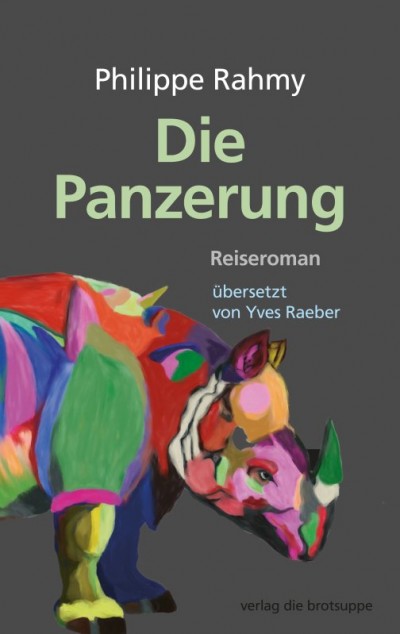
Die Panzerung
In Shanghai nimmt der unter der Glasknochenkrankheit leidende Autor lustvoll den Kampf mit den überwältigenden Sinneseindrücken der in Stahl und Beton gepanzerten und doch verletzlichen Megalopole auf. Mit mal heiterer, mal wütender, dabei immer reflektierender Feder verarbeitet Rahmy seine Grossstadterlebnisse.
-

Die Pürin
Die Geschichte über eine Pürin und ihre Gehilfin. Die Gehilfin notiert sich alles, was sie nicht vergessen will: von den Kühen, den Hühnern, der Arbeit im Kreislauf der vier Jahreszeiten. Die Pürin merkt an, ergänzt, fragt nach, schliesst den Reissverschluss ihrer Jacke bis unters Kinn. Lässt die Gehilfin machen. Man sieht, wie die Pürin geht. Wie sie kommt, weiss man nicht. Sie ist dann einfach wieder da.
-

Die Schule fängt wieder an
Laurence Boissier gelingt es, »aus dieser Trauergeschichte, die ihr erster Roman ist, ein Buch zu machen, das von Leben vibriert.« (Isabelle Rüf, Le Temps).
-

Die Störung
Tonstück und Texte zur Anti-AKW-Bewegung.
-

Die Zukunft der Toten
Schwarzer Humor und der unerschrockene Blick in seelische und politische Abgründe kennzeichnen alle dreizehn in diesem Band versammelten Erzählungen.
-

Doktor Hirschfelds Patient
1919: In Berlin gründet der Arzt und Sexologe Magnus Hirschfeld das Institut für Sexualwissenschaft. Der fiktive SS-Mann Wilfried Blume sucht in den zwanziger Jahren Hilfe bei Dr. Hirschfeld. Obwohl dieser ihm die Normalität seiner Veranlagung aufzeigen will, verfolgt er als überzeugter Nazi später die Homosexuellen umso heftiger, als er seine eigenen Neigungen verbergen muss. Er will mit allen Mitteln die Patientenliste Dr. Hirschfelds an sich bringen, ehe sie in die Hände der Partei gerät.
-

DONNERSTAG ABEND – JEUDI SOIR – THURSDAY EVENING
»Die Konzertphotos von Mischa Dickerhof aber sind brandaktuell, entstanden in den Jahren 2015 bis 2018. Die Aura der Vergangenheit ist hier nur fingiert, die Melancholie ein Ergebnis künstlerisch-ästhetischer Verfahren.«
-

Durch das Westland
Ein klappriger Toyota Camry, Schriftsteller Erlend, Malerfreund Yngve und der Schädel des Revolutionärs Anders Lysne auf der Rückbank – und schon rollt er, der aberwitzige Roadtrip durchs Westland!
-
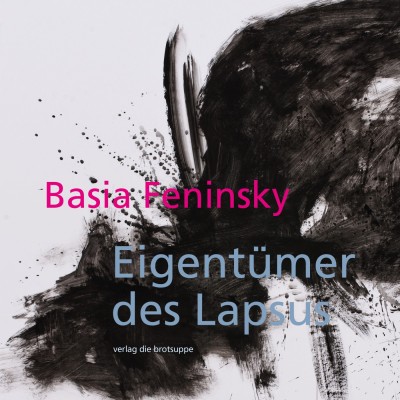
Eigentümer des Lapsus
In ihrem ersten Lyrikbildband versammelt Basia Feninsky lyrische Kurztexte, die sich um die Themen Wunden, Tiere, Kunstlandschaften und Alltagsdetails gruppieren. Den motivischen Gravitationszentren schliessen sich die Elemente Wasser, Kälte, Strukturen und Himmelskörper an. Dazu die Bilder der Künstlerin und Autorin.
-

Ein glückliches Exil
Nach der gewaltsamen Auflösung der Kommune wurde der französische Maler -Gustave Courbet wegen seiner Beteiligung an der Zerstörung der Vendôme-Säule zu sechs Monaten Gefängnis verurteilt. Später im Mai 1873 verlangte die neue französische Regierung auch noch Schadenersatz (335.000 Francs). Gustave Courbet floh in Richtung Schweiz, wo er vier Jahre später im Exil starb.
-

Ein Kirschbaum im Treppenhaus
»Ich fühlte mich wohl und während ich, den Kopf voll guter Dinge, die Treppe hochstieg, wusste ich genau, was mich auf jedem Stock erwartete. Im dritten Stock war nichts mehr wie sonst. Eine andeutungsweise weibliche Gestalt kauerte zusammengesunken genau vor der Wohnungstür von René Miche. Sollte ich vorbeigehen, als ob nichts wäre, oder sollte ich stehen bleiben?«
-

Ein langer blauer Montag
Dieser unterhaltsame Liebesgeschichte aus Soloth ist ein vielschichtiges Gewebe. Der Autor verbindet meisterhaft unterschiedlichste Ebenen, berichtet, empfindet, überdenkt, ist manchmal ironisch, manchmal selbstkritisch, immer bemüht, die Dinge, die ihm passiert sind, in unterschiedlichste Zusammenhänge zu stellen und zu verstehen.
-

Ein lauwarmer Planet mit Läusen
Wie wäre es, wenn wir uns spontan anlächeln würden, unbesehen um Ideen von Fremdheit und Nationalität? Solchen Fragen geht Henri Roorda in einem kleinen Essay nach, den er mit dem Titel »Mein sentimentaler Internationalismus« versehen hat. Wie viel mehr Sorglosigkeit wäre möglich als in der vorsichtigen und ängstlich sich abgrenzenden Gesellschaft, die wir heute noch kennen?
-

Ein Tag in Fukushima – Eine Woche in Japan
Im September 2011 baten japanische Journalisten in Brüssel um ein Treffen mit Rebecca Harms. Sie suchten Erklärungen dafür, warum Fukushima auf die deutsche Kanzlerin eine solche Wirkung hatte, die sie die Hälfte aller deutschen Atomkraftwerke stilllegen ließ.
-
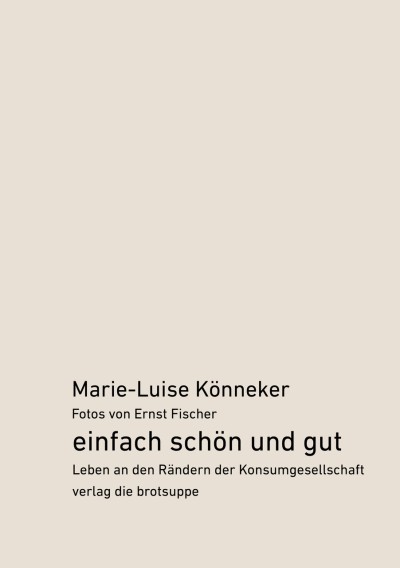
einfach schön und gut
Leben an den Rändern der KonsumgesellschaftAn den Rändern des Konsumismus lauern nicht nur elend und Prekariat und gegen die Degradierung des Begriffs Hausfrau.
-

Es war doch nur Sex
Sehnsucht, Hoffnung, Suche, Täuschung, Enttäuschung, verlieben, entlieben und scheitern, darum kreisen die fünfzehn Kurzgeschichten. Das Beckett’sche Motto: »Try again, fail again, fail better« steht als Ermutigung dahinter.
-

Fast nichts all inclusive
-

FEST
-

Festival Del Rio
Herzstillstand, ausgerechnet während seines Lieblingsfilms. Der Festivaldirektor ist tot, nur eine Woche vor Beginn des renommierten Filmfests. Einzig möglicher Ersatz: sein ambitionsloser Assistent. Ausgerechnet Federico Del Rio. Dessen Filmgeschmack sich auf reine Unterhaltungsstreifen beschränkt und dessen Wissen Arthouse-Werke konsequent ausschliesst.
-
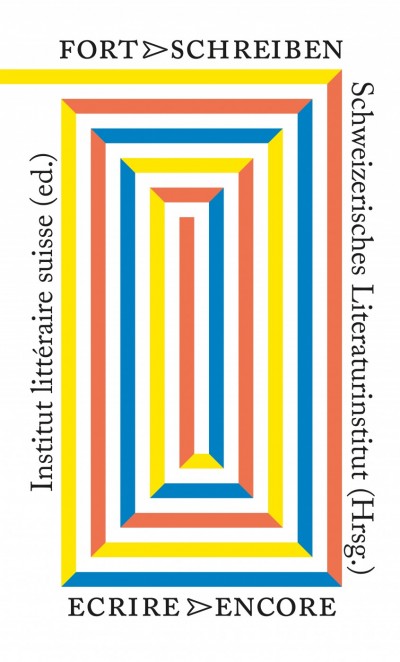
FORTSCHREIBEN – ECRIRE ENCORE
Fortschreiben ist der erste Kollektivtext aus dem Schweizerischen Literaturinstitut in Biel, verfasst von aktuellen und ehemaligen Studierenden und Dozierenden im zehnten Jubiläumsjahr. Die Spielanlage – literarische Antwort im Vorwärtsgang – hat nichts weniger hervorgebracht als einen furiosen Ritt durch fast 100 literarische Universen. Encore! Écrire encore: le premier texte collectif de l'Institut littéraire suisse, réalisé par des étudiant-e-s, des diplômé-e-s et des enseignant-e-s, à l'occasion du 10ème anniversaire. Le texte, une chaîne littéraire, promet une cavalcade à travers près de 100 univers littéraires. Encore!
-
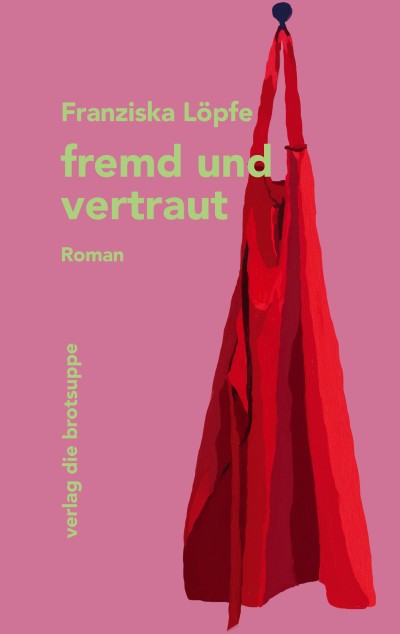
Fremd und vertraut
-

Gegen Gewicht
Gegen Gewicht erzählt die Geschichte einer betäubten Mutter, die unter dem Druck ihrer beeinträchtigten und eigensinnigen Tochter nach und nach aufbricht.
-

Georg und Thea oder Das Buch
Ein junger Mann in Bern. Er lebt zurückgezogen am Stadtrand. Er hat sich in Thea verliebt und eine beeindruckende Begegnung mit ihr hinter sich, die die einzige bleiben soll.
-

Geschichte einer Erhebung
-
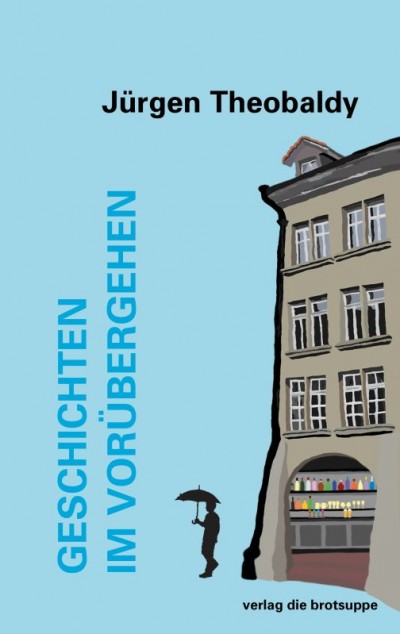
Geschichten im Vorübergehen
Jürgen Theobaldy hat eine Sammlung locker verknüpfter Kurzgeschichten, Anekdoten, Berichte und Kürzestnovellen eines namenlosen, in Bern seine Tage zubringenden Ich-Erzählers geschrieben.
-

Geschlecht und Nation
In ihrem Buch gibt die Soziologin Nira Yuval-Davis eine anregende und flüssig geschriebene Einführung in die aktuellen Diskussionen um Nationalstaat, Nationalismus, Zivilgesellschaft und Geschlechterfragen. Dabei geht sie von einem kritischen Feminismus aus, der Ausgangspunkt für ihren Ansatz einer »transversalen« Politik ist.
-

Gezeitenreibung
November 2003. »Wir sind uns selbst die Fenster, durch die wir die Welt betrachten. Wir bauen und verändern permanent Rahmen und Glas – versuchen genauer zu erfassen, was auch ausserhalb unseres Blickfeldes sich als Wirklichkeit andeutet.«
-

Giftig unterwegs
Was haben westafrikanische Diamanten und Waffen mit illegaler Müllentsorgung in der italienischen Provinz zu tun? Giftig unterwegs ist eine Reise durch die Abgründe der Politik und der internationalen Kriminalität, ein leidenschaftlicher, bedrängender Enthüllungsroman.
-

Grande-Fin
-
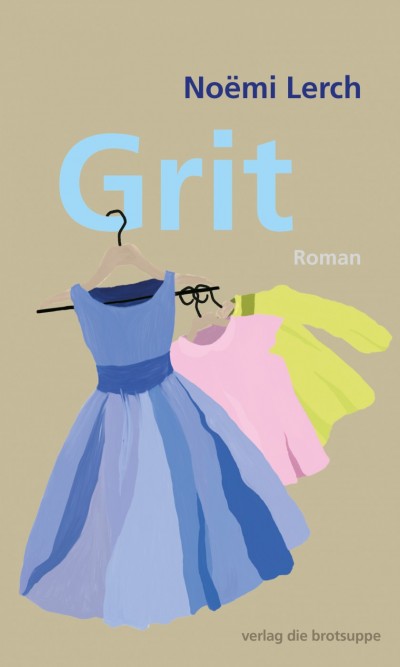
Grit
Eine Hütte am Rande einer kargen Ebene. Im Innern der Hütte ein Kessel. Am Kessel eine junge Frau, sie rührt mit der Harfe die Milch. Wenig Licht kommt durch das Fenster, wo eine alte Frau im Offiziersmantel steht und raucht. In dieser Stille die beiden Frauen, deren Leben kaum unterschiedlicher sein könnte. Die Ältere hat studiert und in der Politik Karriere gemacht, die Jüngere umsorgt einen kleinen Hof und zwei Kinder. Trotz ihrer Verschiedenheit sind die beiden Frauen durch ein starkes Band verbunden, sie sind Mutter und Tochter.
-

GROSSWERDEN UND EINKNICKEN
Ins Innerste der Welt tauchen? Jona träumt davon. Wenn er in den Sommerferien aufs Meer blickt. Wenn er am freien Schulnachmittag zwischen Schlingpflanzen im See taucht. Wenn er bei seiner grossen Schwester Annina Dokumentarfilme über die Tiefsee schaut.
Im Mittelpunkt der Erde drehen sich leuchtende Tiere im Strudel des Wassers. Ihr Leuchten spiegelt sich an den Diamantwänden. Jona saugt alles auf, was er über diese magische Tiefe in Erfahrung bringt. -
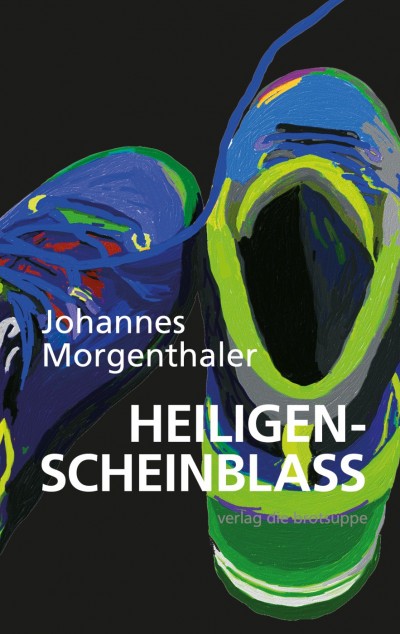
HEILIGENSCHEINBLASS
Ein gealterter Orientierungsläufer beendet seine Karriere – jetzt sieht er sich in seinen Kopfwäldern erst recht der Orientierungslosigkeit ausgesetzt.
-

Hinter dem Gwätt
Ein Bergdorf im romanischsprachigen Graubünden der 1960er-Jahre. Andrea, eine junge Eingeheiratete aus dem Unterland, versucht den seltsamen Bann um die alte Urschla zu brechen. Sie wagt Opposition gegen die ungeschriebenen Regeln einer dörflichen Gemeinschaft.
-

Hirn-Gespinste
Gespräche und Klärungen zur Hirnforschung
-

Hoch oben im Tal der Wölfe
Hoch oben im Tal der Wölfe erzählt die ungestümen, merkwürdigen Jahre einer Gruppe von jungen Leuten, die sich, grimmig entschlossen, die Natur zu retten und die Welt zu verändern, mit einer geschlossenen Gesellschaft angelegt hat.
-
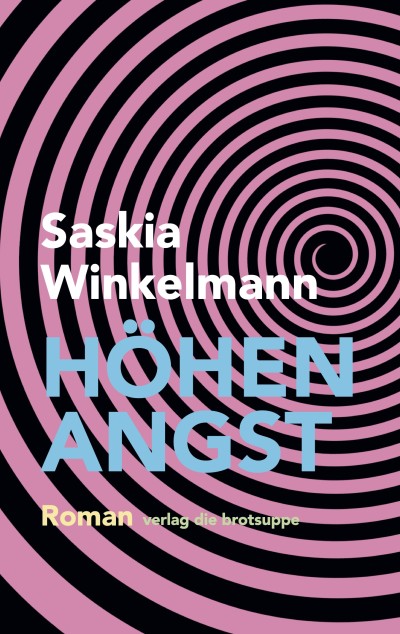
Höhenangst
»Zwei Menschen begegnen einander, und damit zwei Welten – neu ist das nicht, meinen wir erst. Aber dann lesen wir, wie Saskia Winkelmann in ›Höhenangst‹ davon erzählt: einfach grossartig. Kluge Prosa, raffiniert und federnd, mal tastend, dann wieder schweifend, immer kühn und präzis. Dieser Roman ist ein langer Glücksmoment.« Martin Zingg
-
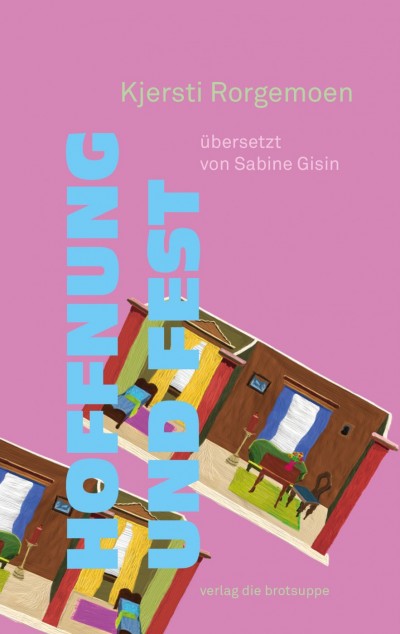
Hoffnung und Fest
Hoffnung und Fest ist ein Roman über den lächerlichen Abstand zwischen dem kleinen Leben, in das man eingebunden ist, und den grossen Banden, die die Welt zusammenhalten.
-
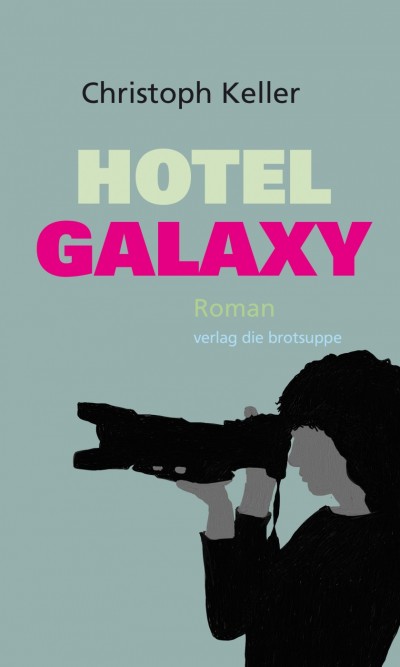
HOTEL GALAXY
Sie treffen sich immer mittwochs, und niemand soll erfahren, was genau sie tun, aneinander, miteinander. Beide sind in alltäglichen Dingen verunsichert, aber füreinander wild entschlossen – Thom, der als Journalist vom vollendeten Text träumt, Valérie, die mit ihrer Kamera die Grenzen der Existenz erkundet.
-
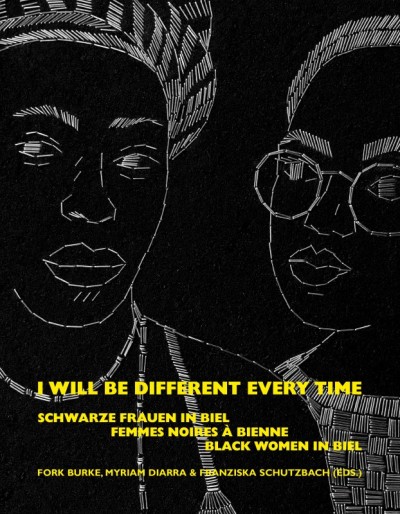
I will be different every time
Dieses Buch erzählt ein Stück »Black History« in der Schweiz. Es macht Frauen mit ihren Stimmen, Biographien, Denkweisen, Perspektiven und Lebenswelten sichtbar, die in der Schweiz selten zur Kenntnis genommen werden.
-

Iljas Kern –
Eine Erinnerung»Iljas Kern« beschreibt die Suche nach und den Kampf zweier Figuren ums Erinnern und Verstehen, um Frieden und Gelassenheit. Sie setzen sich mutig ihren Ängsten aus, geben immer auch wieder auf, und schliesslich rückt alles zusammen, wird klarer und begreifbarer.
-
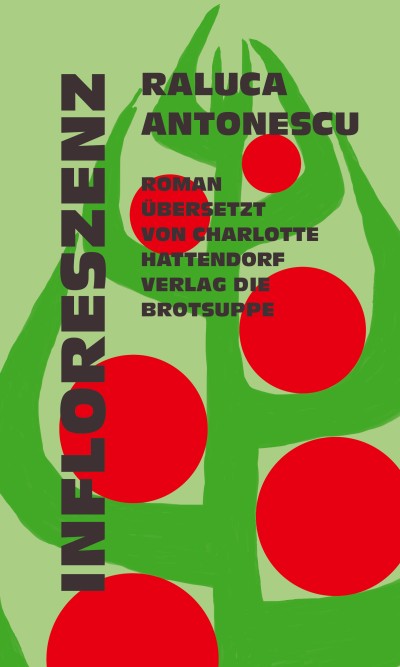
Infloreszenz
Jura, 1911. Eine Frau geht verzweifelt zum »Teufelsmaul« und erfleht vergeblich das Ende ihrer neuen Schwangerschaft. Sie wird zur Ahnin von vier Frauen, Tochter Aloïse, Enkelin Amalia, Urenkelin Catherine und Ururenkelin Vivian. Vier Blüten einer Pflanze, die eine Infloreszenz, einen Blütenstand, bilden. Ihre höchst individuellen Schicksale kreuzen sich auf rätselhafte, überraschende Weise.
-

Inventar der Orte
Funkelnde Sätze mit Augenzwinkern und Selbstironie, mit hintergründigem, manchmal auch bissigem Humor und oft mit einer unerwarteten, schrägen Pointe: Laurence Boissiers »Inventar der Orte«.
-
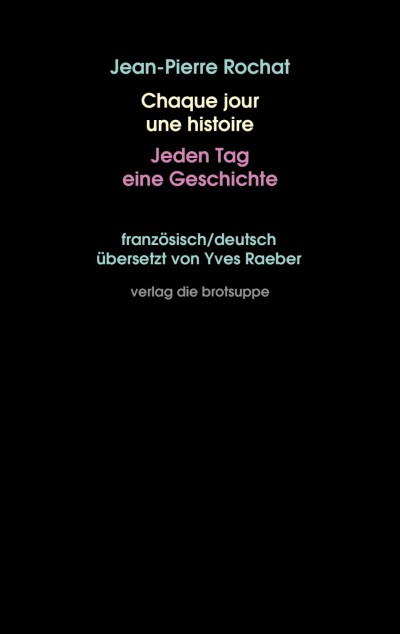
Jeden Tag eine Geschichte |
Chaque jour une histoireJean-Pierre Rochat hat vom 15. Juni bis 18. September 2019 das »Institut Benjamenta« auf der Robert Walser Skulptur von Thomas Hirschhorn in Biel mit Leben gefüllt und jeden Tag eine Geschichte geschrieben, die er abends dem Publikum vorgetragen hat. Das Buch enthält alle in dieser Zeit in Hefte geschriebenen Texte.
-

Kaktus.
Eine WildwestgeschichteSelbst im Land der unbegrenzten Möglichkeiten haben nicht alle Träume eine Chance.
-
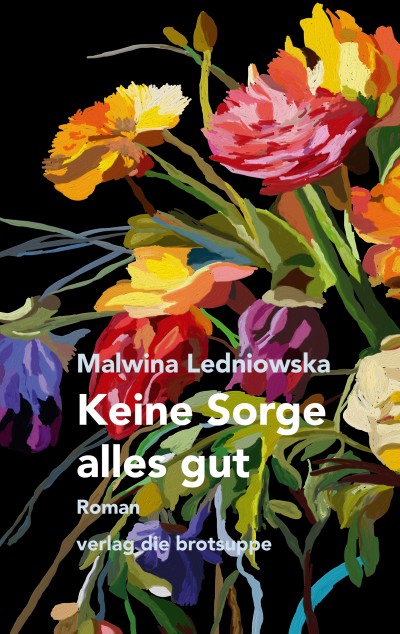
Keine Sorge alles gut
-

Kindergedichte
»Der unkonventionelle Blick, die ständigen Perspektivwechsel und die Behutsamkeit ihrer Annäherungen an Kernfragen des Lebens machen das Besondere der lyrischen Gebilde Francesco Micielis aus. Seine Kindergedichte sind Aufmerksamkeits- und Achtsamkeitsgedichte. Oder Staungedichte. Das Staunen ist ihr wichtigstes Kennzeichen. Wer im Lauf der Zeiten das Staunen verlernt hat, kann solche Texte nicht schreiben. Lesen aber schon. Um mit ihnen das Staunen neu zu lernen. Vielleicht.« (Klaus Hübner)
-

Kleine blaue Nacht
Urs Dickerhof malt Bilder zum Pilatus-Zitat »Ecce homo« und begleitet diese Arbeit mit literarischen Einträgen in ein Notizheft.
-

Konrad, Felix und ich
Da war Konrad, das Auto raste auf ihn zu, das Auto bremste nicht. Nora weiss: Ihr Bruder kommt nicht mehr nach Hause. Nora sieht: Die Eltern liegen auf dem Bett des Bruders. Nora beobachtet: Felix ist verstummt und wird durchsichtiger.
-
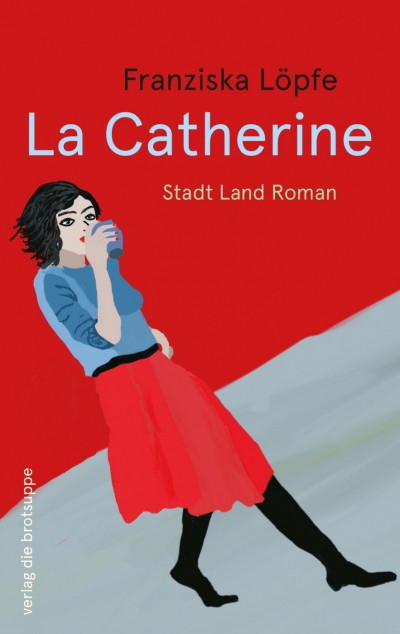
La Catherine
Die wilden siebziger Jahre in der Schweiz und wie sie eine junge Frau erlebte, die vom Land in die Grossstadt kam.
-
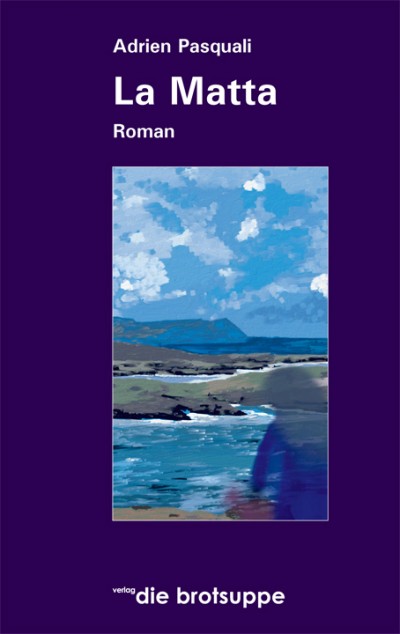
La Matta
An einem Sommertag kehrt der Protagonist in ein kleines Dorf hoch über dem Meer zurück, wo er einst als Kind einen Sommer verbracht hat. Durch jene Kindertage geistert wie ein Schatten La Matta, die Verrückte. Zwei Kinder verfolgen ihre Spur, um sie »vor ihr selbst zu beschützen und vor solchen, die ihr nehmen könnten, was ihr nicht mehr gehört«.
-
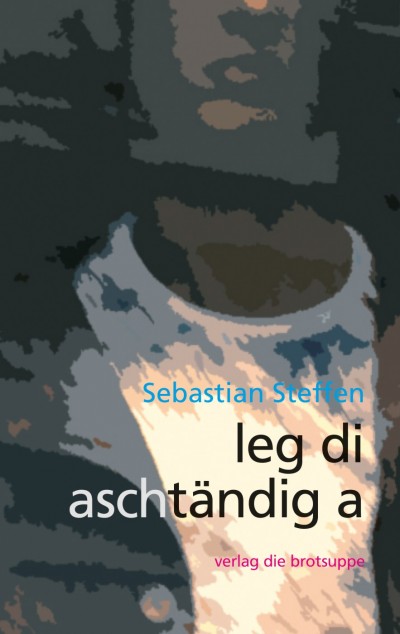
leg di aschtändig a
Die Geschichte zweier Brüder. Da ist ein Abend und Sämi im Ausgang. Er betrinkt sich, zieht durch die Stadt. Unterdessen schläft Esther ein und wacht nicht mehr auf. Ein paar Tage später sind da Sämi und sein Bruder, die tagelang in den Bergen herumirren. Sie wollen Esthers Asche im Meer verstreuen und zum Strand kommen, wo sie als Kinder Zeit mit ihr verbracht hatten.
-
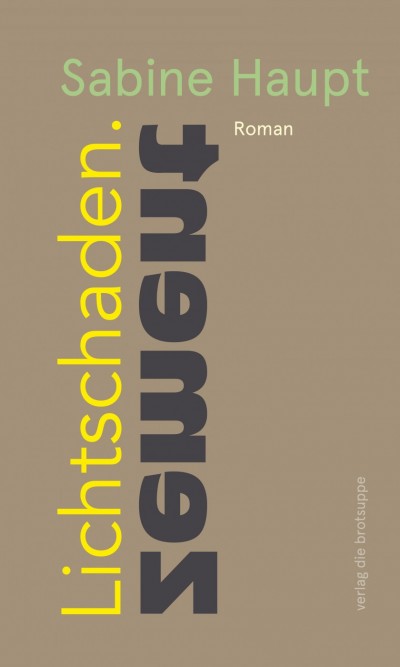
Lichtschaden. Zement
Ein philosophischer Liebeskrimi und intellektueller Frauenroman über die Verbindung von Liebe und Religion, das Verhältnis von Geist und Materie und die Frage, ob es so etwas wie eine Seele gibt.
-
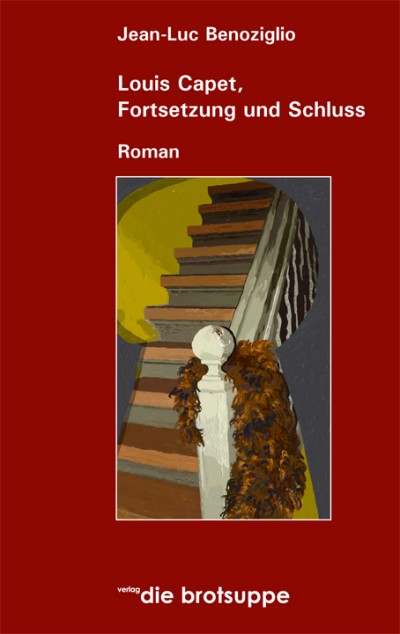
Louis Capet, Fortsetzung und Schluss
»Wenn wohl bekannt ist, dass Louis XVI. um Haaresbreite der Guillotine entging, um vom Nationalkonvent stattdessen zur Verbannung auf Lebzeiten verurteilt zu werden, so weiss man hingegen herzlich weniger über die zahllosen Schwierigkeiten, auf die man seinerzeit stiess, um für den entthronten Souverän ein Land zu finden, das gewillt war, ihm Exil zu gewähren, und fast gar nichts weiss man über die Gründe, die die Schweiz schliesslich dazu veranlassten, Louis Capet aufzunehmen und ihn nach Saint-Saphorien abzuschieben, einen kleinen Marktflecken am Genfersee im damaligen Hoheitsgebiet der Berner Vögte.
Dieser auf umfangreiches unveröffentlichtes Archivmaterial gestützte Roman, der sich wie ein richtiges Geschichtsbuch liest, geschrieben in einem Ton, dessen Leichtigkeit die Ernsthaftigkeit nicht ausschliesst, enthüllt uns den ... gemischten Empfang, der dem einstigen Monarchen bei seiner Ankunft im Waadtland zuteil wurde, die ... unerwarteten Gäste, die kamen, ihm einen Besuch abzustatten, die diversen ... tragikomischen Ereignisse, die seinen Zwangsaufenthalt von Oktober 1795 bis Januar 1798 in der Region prägten, und schliesslich das ... logische Ende, das er dort fand.« (Jean-Luc Benoziglio)
-

Louis Chevrolet
Wer erinnert sich beim Namen Chevrolet an etwas anderes als an die Karosserie der amerikanischen Automarke? Deren Erfinder, Louis Chevrolet, hat in ihrem Schatten gelebt – und in allem aus dem Vollen geschöpft: in seinem Erfindungsreichtum, seinem Wagemut, aber auch seinem Pech.
-
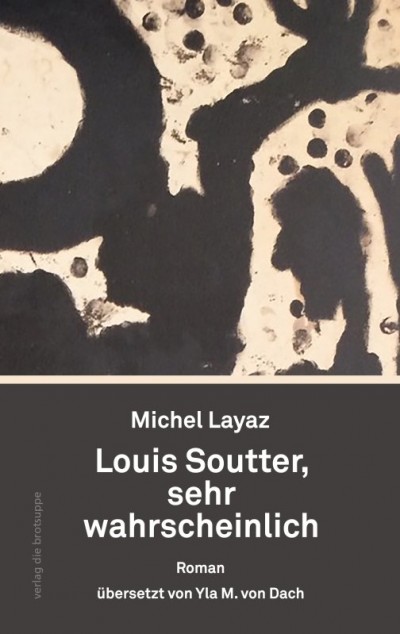
Louis Soutter, sehr wahrscheinlich
Wer war Louis Soutter? Vielen Menschen, die heute eine seiner Fingerzeichnungen zu Gesicht bekommen, ist diese archaisch anmutende Handschrift, die etwas Tiefes in uns berührt, nicht ganz unbekannt. Sie ist einzigartig, unverkennbar. Tatsächlich gehört Louis Soutter, der einen grossen Teil seines Lebens als Insasse in einem Altersheim verbrachte, heute zu den Künstlern, die weit über die Grenzen der Schweiz hinaus Anerkennung gefunden haben.
-

Luc und das Glück
Luc und das Glück ist die aberwitzige Heimreise eines hochkarätigen Behinderten-Quartetts, ein beklemmender Spiessrutenlauf durch eine überall lauernde Normalität, die gnadenlose Schilderung eines virtuosen Eiertanzes um allerlei Fettnäpfchen herum.
-

Maila, Pia und die Schokoladenzwillinge
– Eine Geschichte zum Vorlesen und NachkochenAus gesundheitlichen Gründen reist die junge Pianistin Maila, all ihre Konzerte abgesagt, in ein kleines Küstenstädtchen. Alles ist anders, als sie es kennt, zum ersten Mal ist sie auf sich selbst gestellt. Sie lernt bald ihre Nachbarn kennen: die Köchin Pia und deren beiden Söhne Nello und Meo. Die sind laut, frech, neugierig und auch ein bisschen ungezogen.
Obwohl Maila Freundinnen und Freunde gebrauchen könnte, ist sie so genervt, dass sie den Vermieter bittet, die störende Familie rauszuwerfen. Und dann passiert es: Maila flutet ihre Wohnung und Pia nimmt Maila bei sich auf. Auch wenn sie es nie gedacht hätte: Die Zwillinge wachsen ihr so sehr ans Herz, dass Maila sogar für sie kocht. Plötzlich gehören die vier zusammen. Und dann bekommt Pia die Kündigung …
-

Mario Bettoli erzählt
Die Theater in Biel und Solothurn mit ihren vielen auswärtigen Spielorten haben in Mario Bettoli einen versierten Planer und Direktor des künstlerischen Betriebsbüros gefunden. Mario Bettoli war leidenschaftlicher Theatermann und kannte wie kaum ein anderer alle Theater, Aufführungen und am Theater Beschäftigte in der ganzen Schweiz. Vor seinem Tod 2015 hat er der Herausgeberin und den Herausgebern in vielen Gesprächen erzählt, was ihn im Leben umgetrieben hat.
-

Maud und Aud
»In seinem nachdenklich stimmenden Buch kombiniert Gunstein Bakke poetische Sprache, eine vielstimmige Erzählweise und scharfsinnige Analysen.« (aus der Laudatio zum Europäischen Literaturpreis)
-

Mein Selbstmord
Henri Roorda (1870 – 1925), wohl der originellste Humorist und Schriftsteller der Westschweiz, dessen libertär philosophische Gedanken erst seit Kurzem wieder wahrgenommen werden, hat seinem Leben 1925 ein Ende gesetzt, wie er dies in einem Büchlein mit dem Titel »Mon Suicide« angekündigt hatte.
-
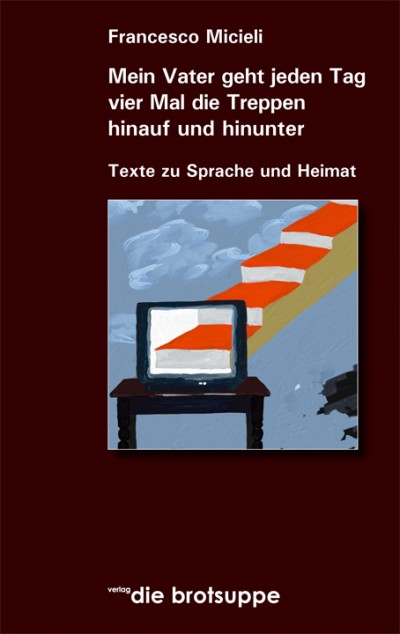
Mein Vater geht jeden Tag vier Mal die Treppe hinauf und hinunter
Eine italienische Weihnachtsfeier im Emmental, ein Vater, der beim Treppensteigen die Sprache verliert, fiktive Lebensläufe, Lügen. Was die hier versammelten Aufsätze, Kolumnen und Vorträge verbindet, ist die Gewissheit, dass Sprache Sinn und Identität stiftet, dass die »Grenzen unserer Sprache die Grenzen unserer Welt« (Wittgenstein) sind.
-

Melken mit Stil
Das Liebesnest ist der Wohnwagen, in dem der Schriftsteller zeitweise schreibt und eben auch liebt und stirbt, und der auf dem Boden eines Bergbauern steht, des Nachbarn, mit dem ihn eine ganz besondere Freundschaft verbindet. Denn dieser Bauer, hintergründige zweite Hauptfigur, liebt nicht nur seine Kühe und den Berg, auf dem er lebt, er liebt auch die Bücher und das Schreiben.
-
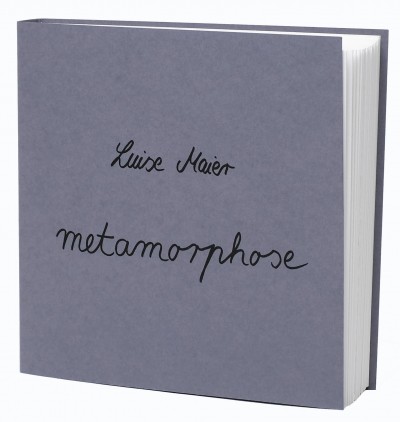
metamorphose
Weiche, runde, kraftvolle Wesen. Konzentrierter, schwarzer Strich auf weissem Blatt. Frauenfiguren, aus einer Linie geformt, klar einem inneren Ziel folgend. Das ist metamorphose: 48 Zeichnungen, in 4er-Serien aneinandergereiht, Frauenkörper, die sich nach und nach entfalten – bis hin zur ihrer völligen Öffnung und gesammelten Kraft.
-

Mit dem Auge schreiben
Eine Sammlung von Texten über Kunst und Künstler, von Reflexionen über die Wirkung von Bildern und von Erinnerungen an Menschen, Ereignisse und Eskapaden.
-
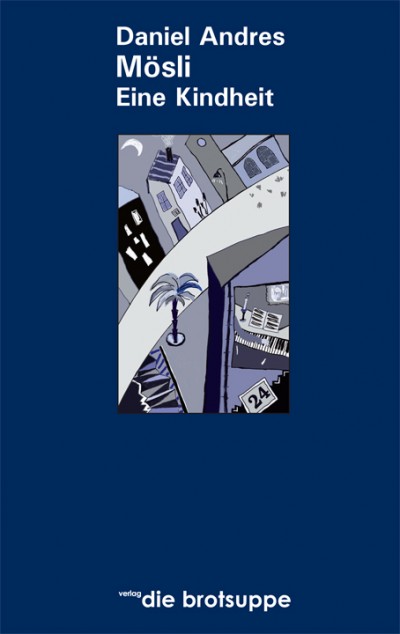
Mösli
Lehrer, Komponist, Musiker, Journalist, Autor, Verleger, Politiker, Theaterkapellmeister, Dirigent, Buchhändler und Gastronom - das Leben von Daniel Andres ist interessant, vielschichtig, nie geradlinig, das Viele wird ganz unterschiedlich reflektiert und es begann 1937 in Biel/Bienne, einer kleinen Industriestadt an der deutsch-französischen Sprachgrenze in der Schweiz. In seinem autobiografischen Roman beschreibt er seine Kindheit und Jugend in einer Familie mit dreizehn Kindern im Mösli, einem Quartier am Rande der Stadt.
-

Musik, ein Leben lang
Daniel Andres hat sich sein Leben lang mit Musik und dem Schreiben befasst. Als ausübender Musiker wie auch als Komponist und Musikkritiker hat er seine Musikbeobachtungen und -erfahrungen in diesem Buch festgehalten.
-

Nach unserer Welt
Antoinette Rychners dystopische Roman Nach unserer Welt wirft konkret politische, menschliche und soziale Fragen auf: Ist Humanismus ein Privileg von Gesellschaften, denen es gut geht? Oder ist es möglich, mitten in der Katastrophe neue Wege des Zusammenlebens in der Welt zu finden?
-
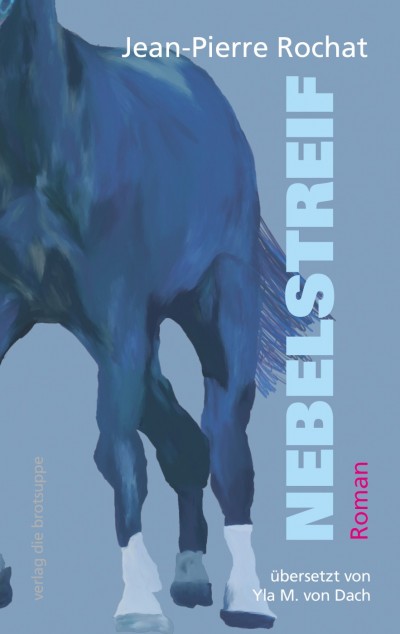
NEBELSTREIF
Jean-Pierre Rochat erzählt in diesem Buch die Geschichte einer individuellen, aber auch einer gesellschaftlichen Tragödie. Es ist ein flammendes Manifest gegen das Schicksal zahlreicher Bauern und Kleinbauern, die unter den herrschenden wirtschaftlichen Bedingungen mehr und mehr in den Tod getrieben werden.
-
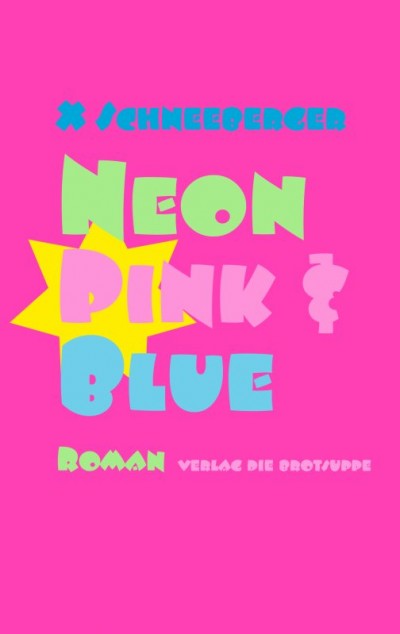
Neon Pink & Blue
In Neon Pink & Blue findet sich eine Drag Queen in einem Klimasommer obdach- und papierlos am Zürisee wieder. Ohne Garderobe out the closet, ohne Badezimmerspiegel und Kostüme ergreift X ein Gefühl der Nacktheit.
-
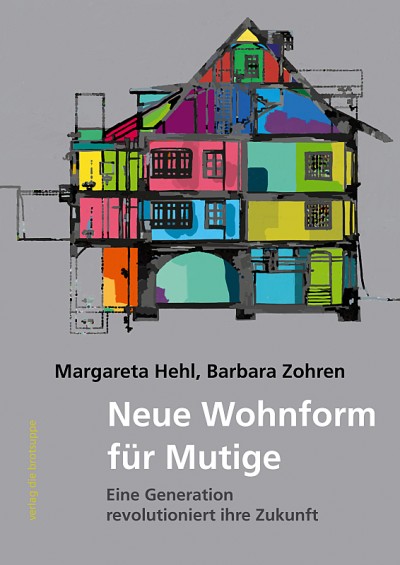
Neue Wohnform für Mutige
Anders alt werden: Den Traum einer Alters-Wohngemeinschaft, in der sich Privates und Gemeinschaftliches ergänzen, in der Toleranz, Offenheit, Humor, Respekt, Kritik, Fehler und Streit ihren Platz finden, die unterschiedlichen ökonomischen Voraussetzungen gerecht wird, die offen ist für Nachbarschaft, Quartier, Stadt und Gesellschaft und in der gemeinsame Projekte verwirklicht werden – wer träumt ihn nicht?
-

Nicht einmal einen Hund besass er
Achim Parterres Geschichten beginnen stets harmlos, bewegen sich aber zielsicher auf den Abgrund zu, schrammen an rauhen Wänden entlang und führen uns an den Rand der Normalität. Und manchmal darüber hinaus.
-

Nonnas Geburtstag
Luca hilft seiner Nonna einen Geburtstagskuchen backen.
Nonna wird 77 Jahre alt.
Ist das alt oder ist das jung? -

November
Ein zehntägiger Spaziergang vom Jorat nach Biel/Bienne. In Gedanken bei einem sterbenden Freund und mit Rousseau und Walser in der Tasche durchquert Jean Prod’hom das Dreiseenland. Abends schreibt er auf, was er erlebt, geträumt und fantasiert hat.
-

OHNE KOMMA
OHNE KOMMA erzählt von Schichten von Bedeutungen und Werten, die die Erwachsenen auf die Menschen, die Dinge und die Welt streichen und die das Kind beobachtet, über die es lacht und die es mit voller Wucht abbekommt.
-

36 Orte in Biel und Umgebung
Schülerinnen und Schüler zweier Klassen vom Seeland Gymnasium Biel schreiben auf je eigene Art Texte über Orte, die sie inspiriert haben, und fotografieren sie.
-

28 Orte und ein Weg – 28 lieux – 28 luoghi
28 Orte und ein Weg dokumentiert ein einzigartiges Landschaftsprojekt im Bieler Seeland. Der Bieler Landschafts- und Raumplaner Kurt Rohner hat auf seinen Wegen durch das Seeland über Jahre Geschichten, Perspektiven und Impulse gesammelt.
-

PhiloZoo
Zwei Sprachregionen, eine Autorin, eine Bildermacherin – und der Karneval der Tiere von Camille Saint-Saëns hat sich zum französisch-deutschen PhiloZoo gewandelt ...
-
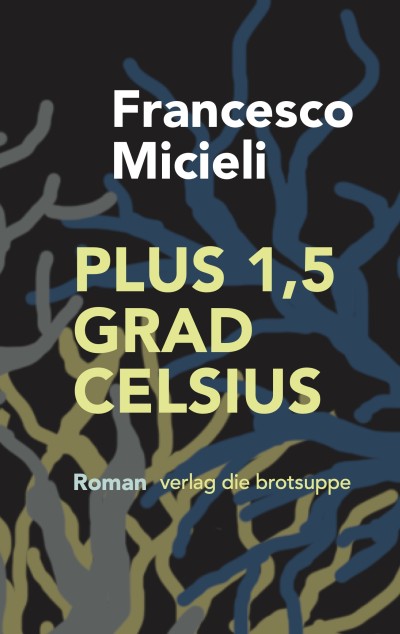
PLUS 1,5 GRAD CELSIUS
Nicht ideologisieren, sondern poetisieren, und: Wir wollen eine gute Welt für alle. Mit alle meinen wir alle!
-

Prekäre Komplizenschaft
Die Wörter, das Sprechen, die StadtPrekäre Komplizenschaft forscht den geheimnisvollen, räumlichen Ereignissen nach beim Beobachten von Wörtern und Sätzen und Sprechweisen.
-

Ruhe sanft
Er arbeitet als Gärtner im städtischen Friedhof. Man hat ihm den Bezirk mit den Kindergräbern zugeteilt. Mit Hingebung kümmert er sich um die Grabstätten, liebevoll pflegt er die Grünanlagen.
-

Schieflage
-

sChly Mandli
Was tun, wenn etwas nicht so ist, wie es sein sollte? Verzweifeln? Jemand anderem die Schuld geben? Aufgeben? Schlecht gelaunt sein?
-

Schriften I bis V – Texte für als mit zur Musik
Urs Peter Schneider ist Musiker, schreibt seit sechzig Jahren immer wieder Texte, die mit dem Musikalischen in vielerlei Zusammenhängen stehen, etwa zu Konzerten, Vorträgen, eigenen und fremden Werken.
-

Schumacher
Eine dichte Geschichte über einen amerikanischen Traum, eine unmögliche Liebe und nicht eingelöste Versprechen.
-
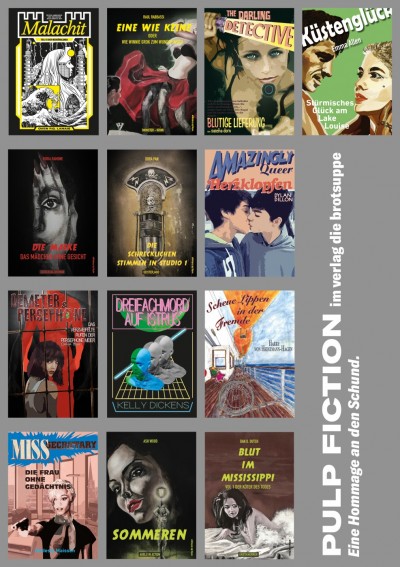
13 Schundromane
Pulp ficiton im verlag die brotsuppe. In einer Hommage an den Schundroman haben sich 13 Autorinnen und Autoren zusammengetan und innerhalb von längstens zehn Tagen je eine Geschichte geschrieben.
-
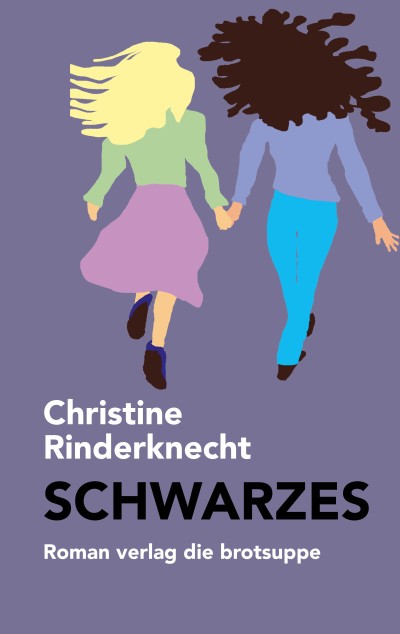
SCHWARZES
»Schwarzes«: Das ist ein Kaffee aus Donnas Bergland, Urgrund, aus dem die Geschichten entstehen. »Schwarzes öffnet das Herz, das Hirn, Schwarzes verbindet, Schwarzes heilt Heimwehkranke und Sehnsüchtige.«
-

Sexualität
Olivier wandte sich von allem ab: von der Ehefrau, dem Sohn, der allzu geliebten Schwester, getrieben von einer dunklen, nie begangenen Schuld. Hinter sich hat er eine Familie und eine Sprache gelassen, hat im Exil, in Paris, gelebt. Doch eines Tages erhält Laura einen Brief von ihrem Bruder: Er will seinen Sohn Michele wiedersehen.
-

SIEBEN JAHRE MIT DEM JAPANER
Was wissen wir über uns selbst, über einander, über die stimmlosen Dinge, die uns begleiten? Was kann über einen Menschen nach langer Zeit herausgefunden, gesagt, gezeigt werden, was bleibt für immer im Dunkeln?
-

SO EINE IST SIE
Die Kinder stellen sich auf.
Ein Kind tanzt
aus der Reihe
Kinder.Wieso musst gerade du es anders machen als die anderen?
-

SO IST ES EBEN
SO IST ES EBEN erzählt von der Macht der Natur und von Gianna, die sich widersetzt.
-

Sommernächte
Ein grosser zeitgenössischer Roman über Fabrikarbeit und die Macht und Zerbrechlichkeit des sozialen Erbes.
-
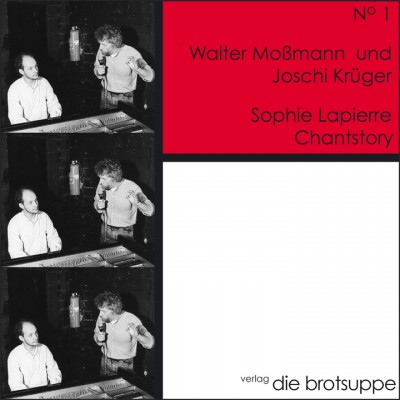
Sophie Lapierre
Radikal, auf eine leise und genaue Weise, ist Walter Moßmanns CD Sophie Lapierre. Er ist den historischen und musikalischen Spuren jener »Verschwörung der Gleichen« nachgegangen, die den linken, egalitären Flügel der Französischen Revolution bildete. Seine Lieder und Sprechgesänge mit Klavierbegleitung durch Joschi Krüger setzen der 1771 geborenen Revolutionssängerin und ehemaligen Dorfschullehrerin ein musikalisches Denkmal. Ein umfangreiches Dossier kommt dem Gebrauchswert der CD zugute.
-

Stadt auf Zeit
Bruno Pellegrinos grosse Kunst besteht darin, auch den leisen Stimmen Gehör zu verschaffen. Mit grosser Leichtigkeit erzählt er poetisch und fliessend vom Vergessen und Vergehen, vom Bewahren und Neu-Finden.
-
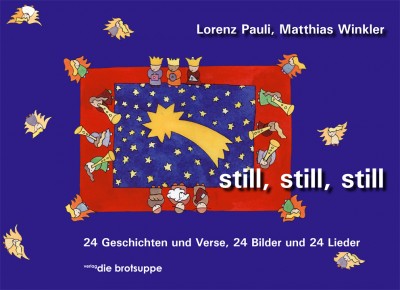
still, still, still
Da sind einmal die traditionellen Weihnachtslieder. Dazu kommen die Geschichten und Verse von Lorenz Pauli. Mit Humor und Charme erzählt er von Dingen, die nur in der Wunder-Winter-Welt des Dezembers geschehen können. Und Matthias Winkler hat die Stimmung der Geschichten und Verse in Bilder gebannt.
-

suisseminiature
»Der Réduit-Roman, den die Schweiz zwar nicht verdient, aber dringendst nötig hat.«
-

Teneber Vid
Sabine Gisin erzählt in virtuoser Sprache von der Suche nach sexueller Identität und Selbstbestimmung.
-
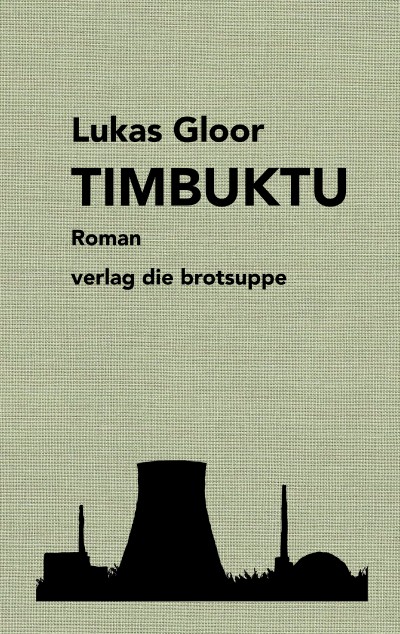
TIMBUKTU
»Wie im Märchen einer auszieht, das Fürchten zu lernen, so kommt der Enkel eines störrischen Grossvaters nach Timbuktu. Einer der wildesten, zugleich fernsten und allernächsten Orte im Herzen der Schweiz. Dort zieht er ein, trinkt Kaffee, raucht, füttert die Katze und wartet, dass die Furcht kommt.« Friederike Kretzen
-

Traubenmord
Spannender Krimi aus dem Seeland um einen Winzer. Linus Bergamin kommt als kleiner Junge mit seinen Winzereltern aus dem Graubünden nach Ligerz an den Bielersee, um dort auf gepachtetem Land Trauben anzubauen und Wein herzustellen.
-

Tunnelblick
Die Geschichte einer Reise in die Unterwelt.
-

Über Menschliches
Krankheit und Sterblichkeit wecken bei vielen Menschen den Wunsch nach Überwindung der Beschränkungen, die dem Leben und Erleben durch den Körper vorgegeben sind.
-

Verpasst Deutschland den Anschluss?
»Die Helden beherrschen ihre Rolle aus dem Effeff. Gegeben wird das Stück Kapitalismuskritik. Thomas Ebermann und Rainer Trampert, vor ewigen Zeiten an der Spitze der Grünen, sind wortgewaltige Kritiker der gesellschaftlichen Entwicklung.«
-

versickerungen
gedichte, geschichten, bilder und szenen»Nach einem Satz wie ›Du atmest Luft ein und Worte aus‹ ist die Welt für immer reicher. Ein Wiegenvers wie ›Du kannst schlafen / schlafe jetzt / sei unbesorgt: // was auf Erden passiert / bleibt auf Erden‹ berührt nicht nur sorgenvolle Eltern, sondern schlägt eine magische Brücke zwischen Schlaf und Ewigkeit.«
-
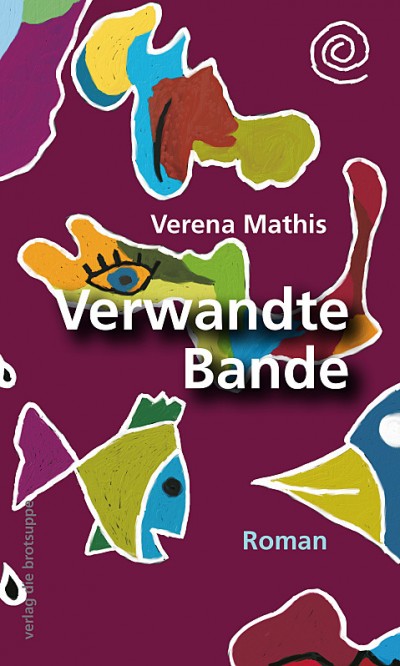
Verwandte Bande
Zu allen saisonalen Arbeiten in den Weinbergen der Bündner Herrschaft kommt die Mutter mit den zwei Mädchen von Zürich her, um ihrer eigenen Mutter, der Nana, zu helfen.
-

Vielfrass
In den Strassen stinkt es nach Rauch, die Erzählerin scheint allein in der Welt zu sein. Wie immer geht sie zum Zoo, wo sie eine Anstellung hat, aber fast alle Tiere sind tot. Nur ein Vielfrass ist noch am Leben.
-

Von oben herab
»Wie Werner Hadorn den Ratsbetrieb im Bieler Stadtrat von der Tribüne aus, eben von oben herab, beschreibt, ist etwas Besonderes.«
-
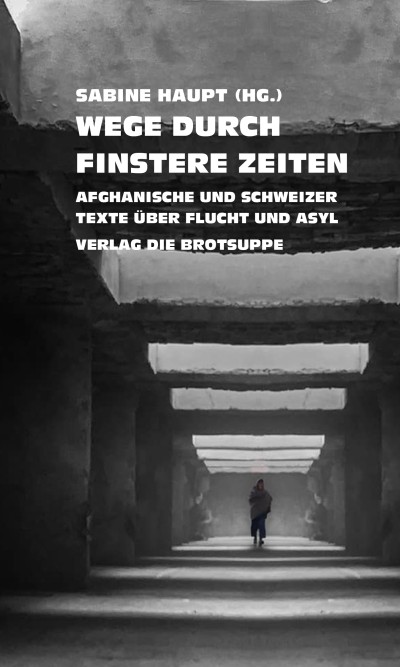
Wege durch finstere Zeiten. Afghanische und Schweizer Texte über Flucht und Asyl
-

Weihnachtslieder – für Klavier
Klaviernoten für Weihnachtslieder von Tobias Jenni, illustriert von Matthias Winkler.
-

WEISST DU, WELCHES TIER?
Jedes Tier hat einen Wunsch. Es wäre gerne anders: Kleiner oder gefährlicher oder niedlicher. Sauberer oder fauler oder einfach nur anderswo zuhause. Im Warmen oder im Wasser oder auf der Wiese. Jedes Tier wäre gerne ein anderes. Findest du heraus, welches?
-

Wie die Milch aus dem Schaf kommt
Eine Migrationsgeschichte – ganz anders. Selma Einzig macht in der Hinterlassenschaft ihrer Grossmutter Pauline einen schockierenden Fund. Aus ihrem Alltag herausgerissen macht sich die 35-jährige Protagonistin auf die Suche nach verdrängten Teilen ihrer Familiengeschichte. Sie führt sie in die Ukraine und nach Israel.
-

Wiedersehen in Tanger
Der erfahrene Einzelgänger Tarik sucht Erleuchtung, die Ornithologin Chaya nach einem sibirischen Zugvogel und die Botanikerin Thelma meint, nichts mehr suchen zu müssen. Die drei Protagonisten begegnen sich in der magischen Hafenstadt Tanger auf einem Kongress über die Gefahren der Ausbreitung der Wüsten. Niemand von ihnen ahnt, dass dies der Beginn einer leidenschaftlichen Liebe und vieler abenteuerlicher Ereignisse ist, die ihr Leben und ihre Weltanschauungen grundlegend verändern werden.
-

Wildes Licht
»Wildes Licht«: ein verdichtetes Epos zwischen Alltag, Säbelrasseln, Spannung und einer verqueeren Mittelalterromanze.
-
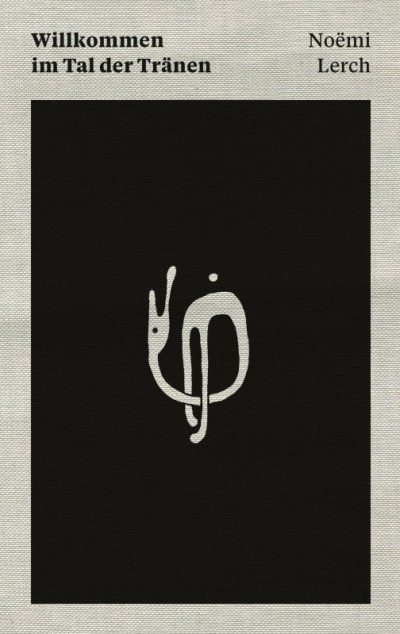
Willkommen im Tal der Tränen
Noëmi Lerch erzählt in von ihr gewohnter Weise poetisch, anmutig, berührend und kritisch über das nicht ganz so romantische Leben als Bauer, Hirt und Knecht. Das Duo Walter Wolff hat das Buch beeindruckend bebildert.
-

wo auch immer wir sind
Nachdem bei ihrem fünfjährigen Sohn eine schwere Leukämie diagnostiziert worden ist, protokolliert Antoinette Rychner den Alltag ihrer aus der Bahn geworfenen Familie. Monatelang werden die Eltern zwischen der Hoffnung auf Genesung und der Verzweiflung über Rückfälle und Komplikationen hin- und hergeworfen, kommen an ihre Grenzen – und finden doch immer wieder neue, ungeahnte Kräfte.
-

Wo der August ein Herbstmonat ist
Für seinen zweiten Roman hat Bruno Pellegrino sich vom Leben des Westschweizer Dichters und Fotografen Gustave Roud inspirieren lassen. Wo der August ein Herbstmonat ist erzählt von der Stille der Tage, einem Leben zwischen blassgrünen Feldern, von Dingen, die zu Ende gehen, und dem, was bleibt.
-
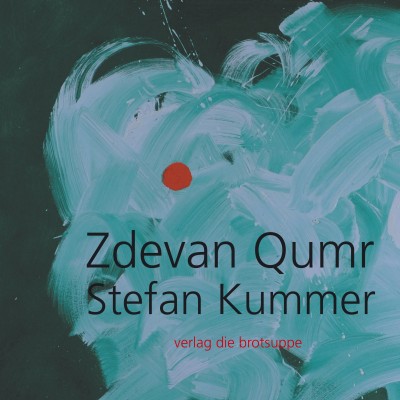
Zdevan Qumr – Stefan Kummer
Dieser Band versammelt Bilder und Texte von Zdevan Qumr, als Stefan Kummer 1963 in Bern geboren. Er hat die kantonale Schule für Gestaltung in Biel absolviert, danach die Malfachklasse an der »escuela massana« in Barcelona. 1992 bekam er das Ernst-Anderfuhren-Stipendium. Ab 1984 stellte er seine Werke im In- und Ausland aus. Er lebte und arbeitete in Biel. 2013 starb er viel zu früh.
-
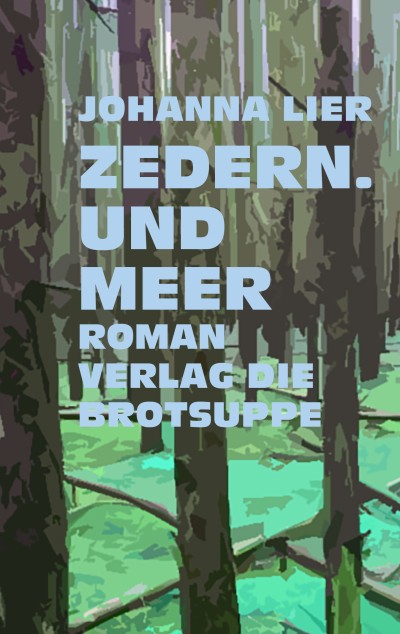
Zedern. Und Meer
Bell und Audre. Mutter und Tochter. In Bells Wäldern haften die Bäume nicht mehr im Boden, auf Audres Insel stehen die Wälder in Flammen.
-

Zingara Triste
Zingara Triste ist zuerst einmal das einem Spaziergänger bei Triest zugefallene Bild. Dessen Name hat mit dem Bild nur einen buchstäblichen Zusammenhang.
-

1969 Zwei Freunde – ein Sommer
Für Peter Knittel und Mario Frei gleicht das Leben einem kunterbunten Kaleidoskop. Zukunftsträume, Freundschaft, erste Liebe, Musik und Lebenslust prägen diese Zeit. Unbeschwert und facettenreich wie der Sound ihrer amerikanischen Lieblingsband verläuft der Alltag der beiden Freunde im beschaulichen Chur.
-

Zwölf Runden
Warum kann ein Fussballspieler kochen und interessiert sich für Kunst? Ein skurriler Fussballroman mit einem Hauch Krimi und einer Prise Liebe.
-
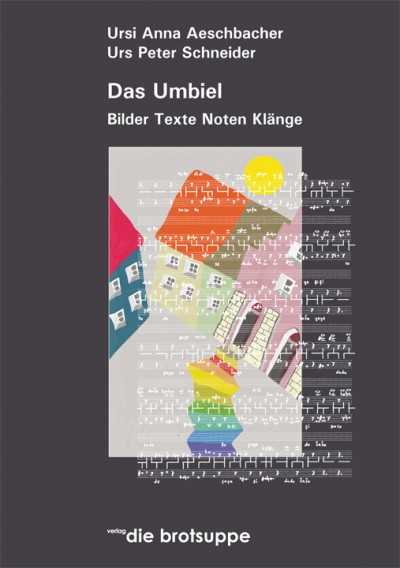
Das Umbiel
Bilder Texte Noten Klänge: Zwei verschiedene Menschen, Ursi Anna Aeschbacher (geboren 1951 in Biel), Schreiberin und Buchillustratorin, und Urs Peter Schneider (geboren 1939 in Bern), Musiker und Texter, widmen ihre Arbeit auf sehr unterschiedliche Art und Weise einer Stadt.
-

Gott im Gletscherspalt
Erzählungen von Alltäglichem und Außergewöhnlichem. Zum Haare raufen. Sätze, die dicht an der realistischen Handlung bleiben, mitten aus dem Leben der vielen unterschiedlichen Menschen, die dieses Buch bevölkern, immer mit Distanz erzählt. Und die Enden entweder mit Schrecken oder ohne, immer aber atemraubend und nachdenklich stimmend. Ob die Beruhigung »schlaft jetzt ein« in der Gutenachtgeschichte ernst gemeint ist?
-
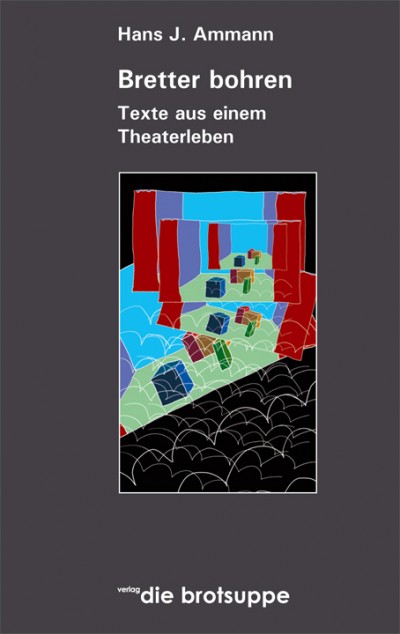
Bretter bohren
»Theater ist langsam: Geschichten brauchen Entfaltungszeit. Jenseits der Bühne wächst die Geschwindigkeit. Wir schaffen selbst das Tempo, das uns überfordert: Geschichten lassen sich darauf nicht ein.«
-
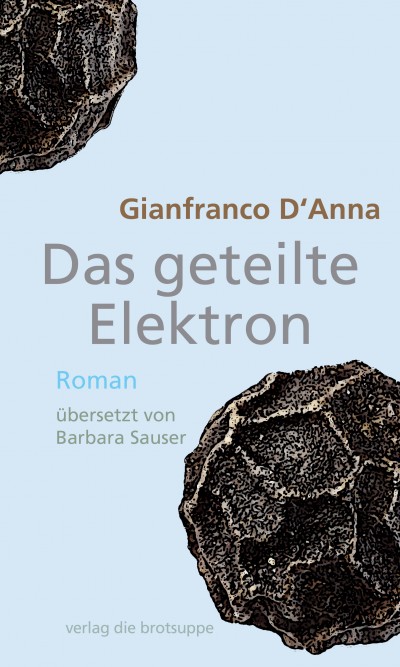
Das geteilte Elektron
Bern, 1905: Der noch unbekannte Albert Einstein veröffentlicht einen wegweisenden theoretischen Artikel, der indirekt die Existenz des Elektrons beweist. Damit beginnt ein transatlantischer Wettlauf zwischen dem jungen, aufstrebenden Wiener Forscher Felix Ehrenhaft und dem US-amerikanischen Physiker Robert Millikan, der seinerseits die Hoffnung schon beinahe aufgegeben hat, jemals zu Ruhm zu gelangen. Beide arbeiten fieberhaft daran, die Höhe der Elektronenladung experimentell zu bestimmen. Wer kann das winzige Teilchen, das noch nie jemand gesehen hat, präziser erfassen?
-
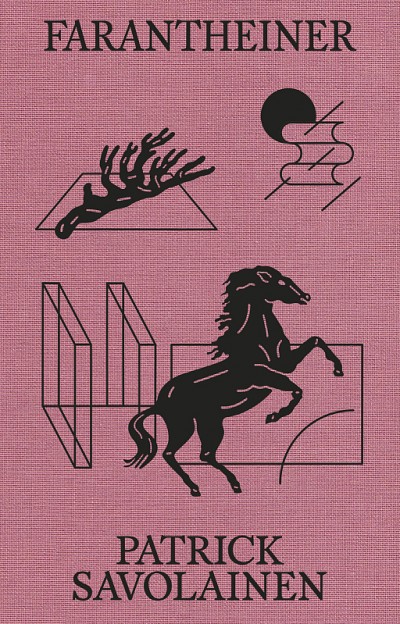
Farantheiner
»Die Stationen dieses Buches wären in diesem Fall unter anderem die folgenden: Ein an Bedingungen geknüpftes Testament. Ein Weinberg in den Weiten des nordamerikanischen Kontinents. Cowboys. Das Öffnen von Türen. Das Gehen unter der Sonne. Ein Pferdedieb. Und mitten drin: das ›ungezügelte Verlangen‹.«
-
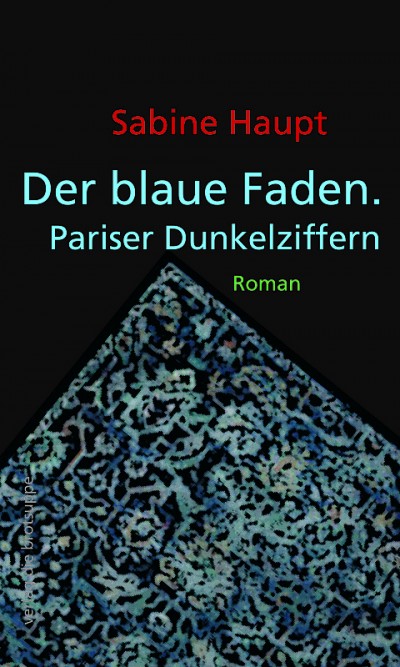
Der blaue Faden. Pariser Dunkelziffern
Der Roman Der blaue Faden. Pariser Dunkelziffern spielt im Hitzesommer 2003. Ort der Handlung ist eine Pariser Mansarde, aus der es zunächst noch ein paar Auswege gibt: in die Strassen von Paris, ins Internet, in die Vergangenheit der Heldin, d.h. nach Genf und Wien und an den Bodensee. Hinzu kommen reale und virtuelle Begegnungen mit fremden Männern und einer ziemlich ungewöhnlichen Concierge.